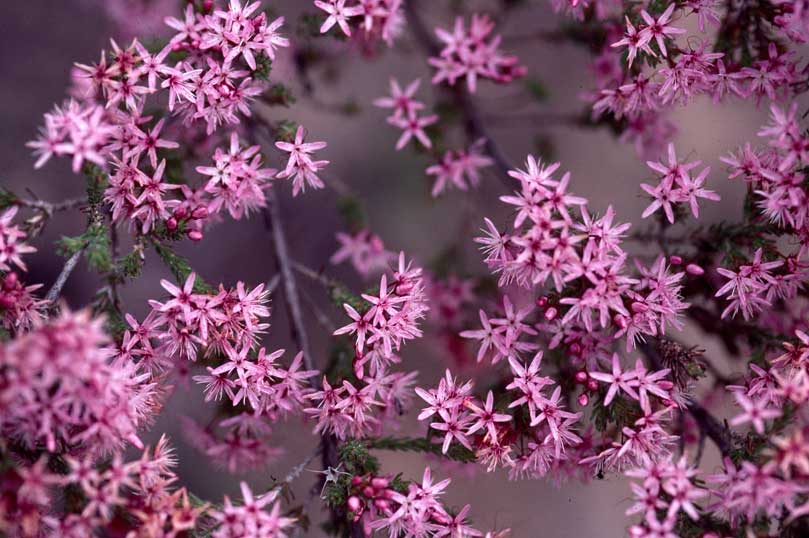Acacia acinacea - Gold Dust Wattle
Common name Gold Dust Wattle
Size 2 m high 1.5 indiameter
Acacia acinacea is a fast growing, frost ( 0 to -5C) and drought tolerant, nitrogen-fixing shrub. It is in demand in revegetation programs in some parts of it range for its ability to pioneer degraded sites and is highly recommended as an ornamental.
Flowering in this species occurs mainly during winter, depending on seasonal conditions and pods mature during September to May.
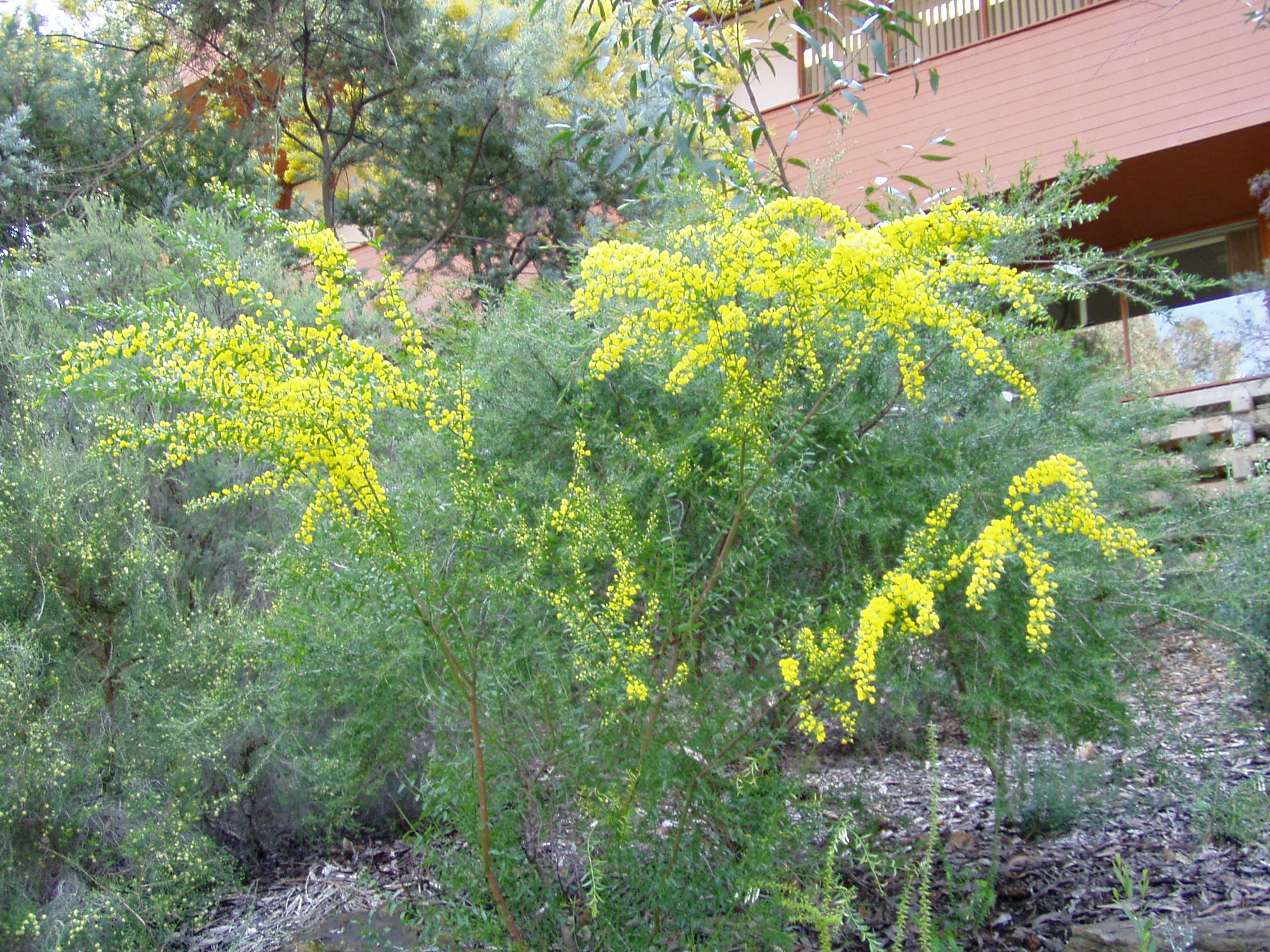
Acacia amblygona - -
Size about 1.5 m high
Acacia amblygona is a small, spreading shrub ranging from completely prostrate in habit. The phyllodes are generally ovate to elliptical up to 150 mm long, tapering to a sharp (pungent) point. The bright yellow flowers occur in globular-shaped clusters in the phyllode axils during winter and spring. The flowers are followed by seed pods about 50-70 mm long which are curved or twisted in shape.
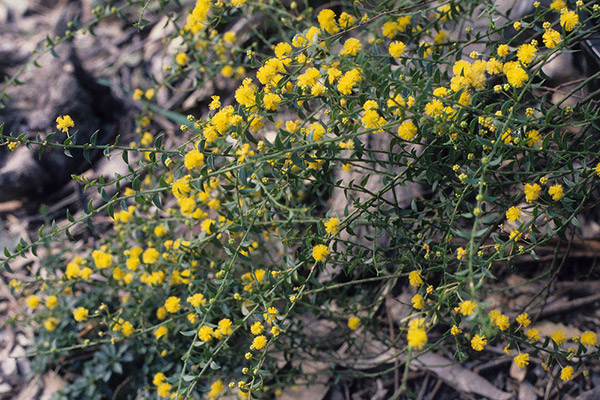
Acacia cardiophylla - West Wyalong Wattle
Common Name West Wyalong Wattle
Size 2 to 3 m in height
Acacia cardiophylla) is an evergreen shrub that has feathery like leaves and bright yellow flowers during its July to November blooming period. Acacia cardiophylla is indigenous to central and southern New South Wales.
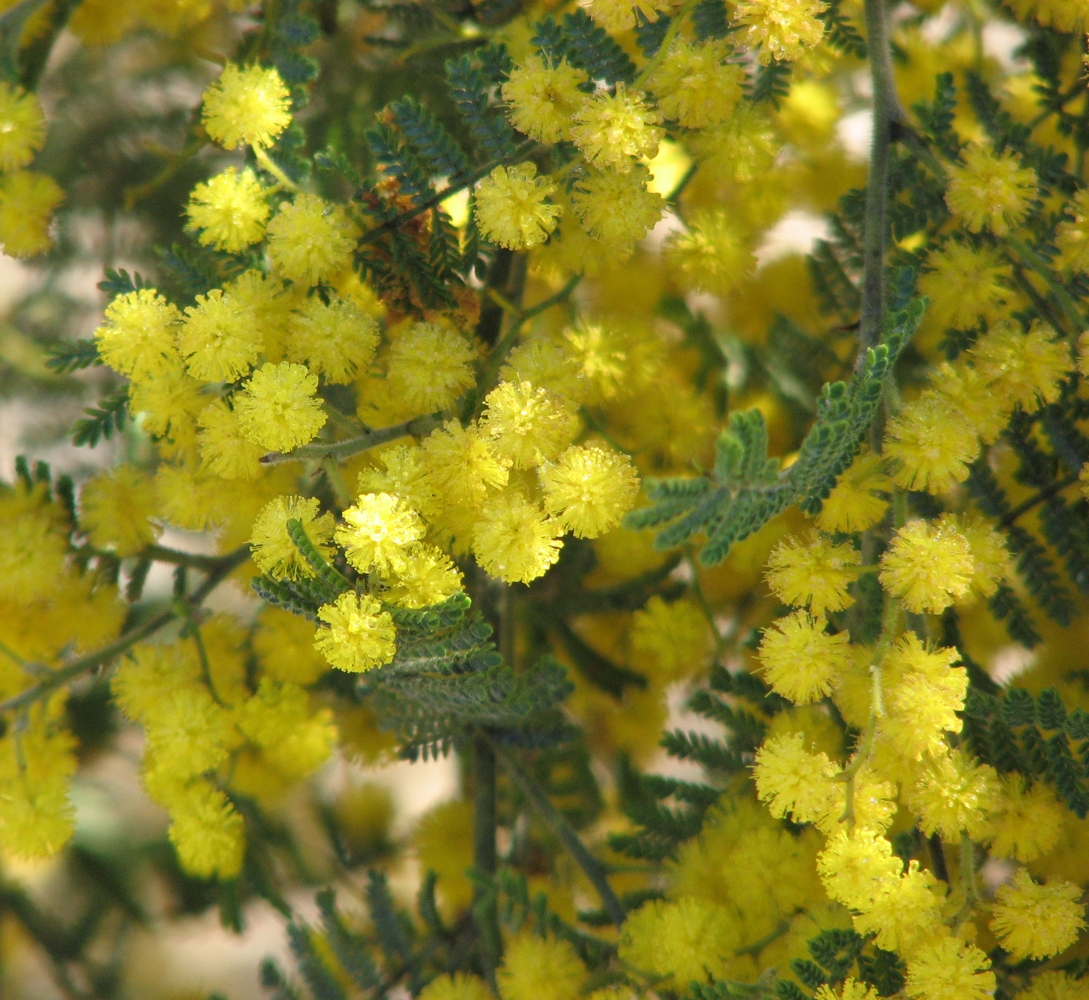
Acacia decora - Showy Wattle, Western Silver Wattle
Common name Showy Wattle,Western Silver Wattle
Size under 2 m but sometimes up to 5 m
This is a hardy species which is tolerant of a wide range of conditions. It prefers well drained soils in light shade to full sun. A.decora is a worthwhile addition to gardens in many areas of Australia.
Acacia decoraPhoto: Keith Townsend
.
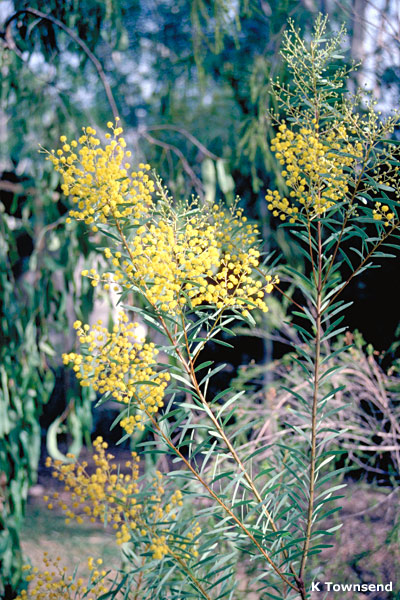
Acacia doratoxylyn - -
Size up to 6 m
Flowering in this species occurs during spring, and pods mature over summer
Acacia doratoxylon is a nitrogen-fixing, small tree, which can be grown on well-drained recharge sites and a range of shallow, light-textured soils . It is considered a long-lived, drought and frost tolerant species but relatively slow growing. Its wood has been compared to Blackwood (A. melanoxylon ) in appearance and may have some potential as a speciality furniture timber and for craftwood . This is a relatively long-lived species perhaps reaching 2030 years old.
125730055372000
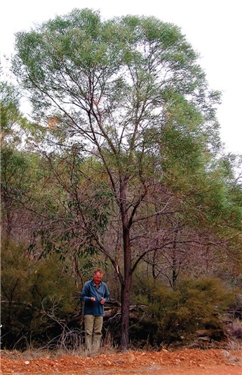
Acacia floribunda - Gossamer Wattle, Weeping Acacia and White Sallow Wattle
Common names for it include Gossamer Wattle, Weeping Acacia and White Sallow Wattle
Size 6m high
Acacia floribunda is a perennial evergreen shrub or tree.
Its cream-colored flowers occur in the early Spring (August to September in the southern hemisphere).

Acacia genistifolia - Spreading Wattle or Early Wattle
Common Name Spreading Wattle or Early Wattle.
Size up to 3 m
Acacia genistifolia is a small to medium shrub. Like most members of the genus, the mature plant does not have true leaves but has leaf-like flattened stems called phyllodes. In A.genistifolia the phyllodes are narrow and rigid, about 15-30 mm long with a sharp point
116205074866500
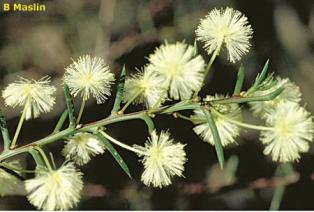
Acacia hakeoides - Hakea Wattle, Western Black Wattle, Hakea Leafed Wattle
Common Name Hakea Wattle, Western Black Wattle, Hakea leafed wattle.
Size 1-6 m tall
Acacia hakeoides is a relatively fast growing, nitrogen-fixing shrub with a short to moderate life-span. It is drought resistant and moderately frost tolerant and best suited for cultivation on a range of recharge sites that have light-textured soils . This species has potential as a low shelter belt for stock and for erosion control of sandy or loamy soils; and its seeds were traditionally eaten by Australian Aborigines. It also has potential as an ornamental shrub.
79057532258000
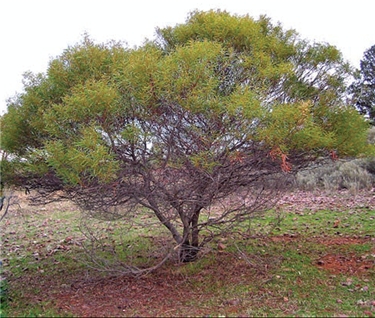
Acacia iteaphylla - Willow-leaf Wattle
Common Name Willow-leaf Wattle
Size 2-4 m high
this shapely decorative shrub is hardy and fast growing and flowers intermittently throughout the year with a peak flowering period in spring. It is versatile in its habit growing to a height of 2-4 m with some forms becoming upright, whilst others are pendulous and bushy. Several specimens which are thriving in the Australian National Botanic Gardens are upright and multi-stemmed from ground level.
0170053000Acacia iteaphylla grows best in a well drained sunny position. It is moderately frost tolerant and moderately salt tolerant. It can be propagated from cuttings taken between February and April.
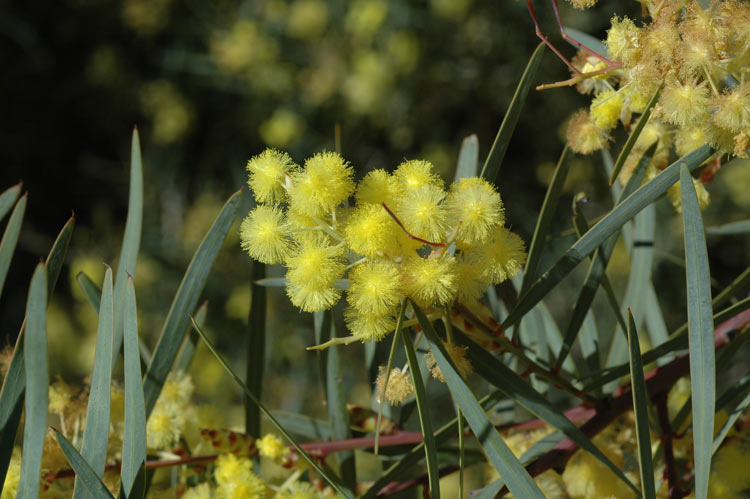
Acacia oswaldii - Umbrella Wattle , Umbrella Bush
Common Name Umbrella Wattle , Umbrella Bush
Size 2-6 m
Erect or spreading tree or shrub 26 m high; bark finely fissured, dark grey; branchlets angled at extremities.
140017520764500
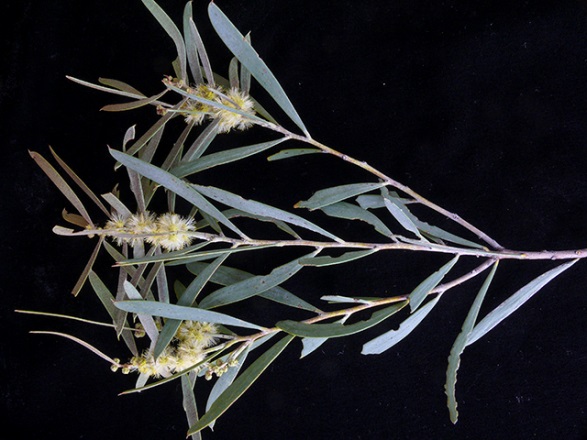
Acacia paradoxa - Kangaroo Thorn, Prickly Wattle, Hedge Wattle, Paradox Acacia
Common Name Kangaroo Thorn, Prickly Wattle, hedge Wattle, paradox acacia
Size 2-3 m high by 3-4 m across.
Stems with stiff spines. Flowers in yellow Balls. Kangaroo thorn is widely spread across Australia, regenerating from seed after disturbances, such as bush fire. Small birds, including wrens, use this plant as shelter and dwelling, while it is relied upon as a food source for moths, butterflies and other insects, birds also feed on its seeds.
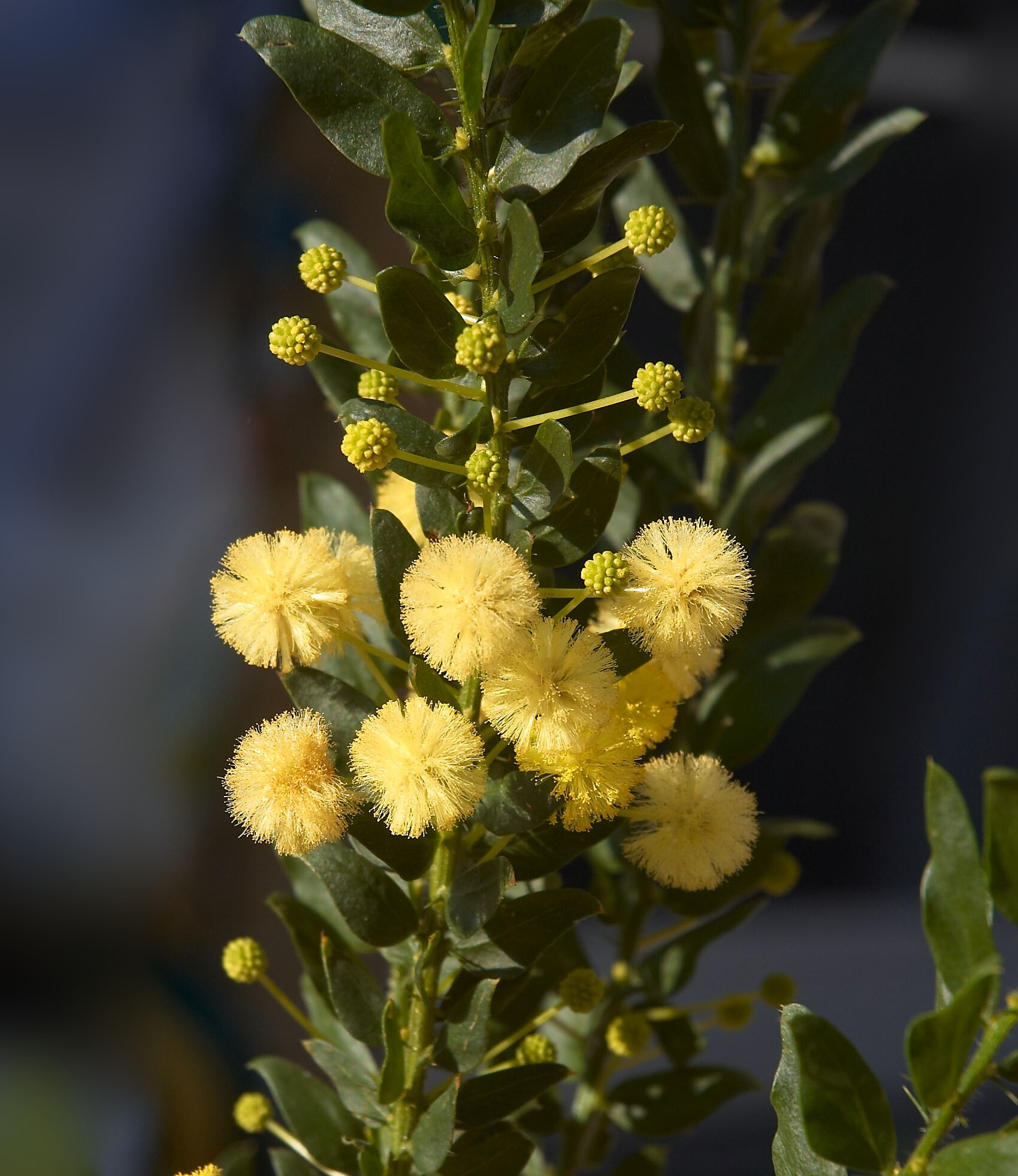
Acacia pendula - Weeping Myall, True Myall, Boree, Nilyah and Balaar
Common name Weeping Myall, True Myall, Boree, Nilyah and Balaar
Size Acacia pendula is a spreading or erect tree, growing up to 12m high
Has a graceful, weeping habit, and striking blue-grey foliage. Because of this, it is also popular in overseas cultivation, including in Iran and Kuwait
Drought and frost tolerant and provides good shelter and wind breaks. It attracts parrots as they eat the seeds.
2693035147955002857514922500
Acacia penninervis - Hickory Wattle, Mountain Hickory or Blackwood
Common Name Hickory Wattle,Mountain Hickory or Blackwood
Size 2-8 m high
10001252603500
.
Acacia podalyriifolia - Queensland Silver Wattle
Common Name Queensland Silver Wattle
Size 6 m High and 6 m wide
A two year old seedling can grow quickly to become promiscuous and flower within that time. But what a sweet, distinct and delicious fragrance it has.
After flowering, the Queensland Silver Wattle produces seed and these have a mutually beneficial relationship with ants. Each seed has a nutritious treat attached to it. The ants take the seed, with the treat, into their nests. Once the treat is eaten, the seed is already sown, and it waits for a bushfire to come along and bingo a woodland of Queensland Silver Wattles.
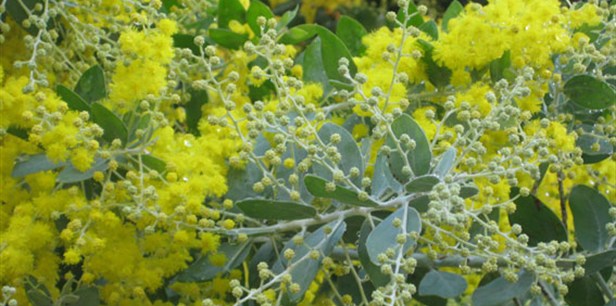
Acacia stenophylla - River Cobra
Common Name River Cobra
Size from 5 m up to 15 m
Acacia stenophylla can be a tree up to 15 tall tree or a shrub up to 5 m tall, and has a propensity to form root suckers. It grows along the banks of rivers and creeks and sometimes on adjacent floodplains. Soils are usually alkaline, often saline, alluvial clays
Flowering in this species occurs mainly during winter, depending on seasonal conditions and pods mature during September to May.
Acacia stenophylla is a moderate to fast growing, long-lived, nitrogen-fixing tree. It is considered extremely salt tolerant and grows on sites that are often subject to waterlogging . While adapted to alkaline, clayey soils substantial provenance variation has been noted . Acacia stenophylla can be used as a shelterbelt and windbreak species and its wood has potential for use as high value furniture timber and as a source of posts and fuelwood .
8572569723000

Acacia truncata - Saw Tooth Wattle
Common Name Saw tooth wattle
Size 0.5-2.3m
Acacia truncata is a coastal shrub in the family Fabaceae, with a native distribution along the southwest coast of Western Australia. A specimen of this wattle was part of an early European botanical collection, perhaps the first from Australia.
The shrub is a dense and dome shaped plant 0.52.3 metres (1 ft 8 in7 ft 7 in) high. Flowerheads are globe-shaped and composed of 7-16 pale yellow flowers, on stalks between 10 and 25 mm (0.39 and 0.98 in) long. Like many other Acacia species, A. truncata has phyllodes rather than true leaves. The phyllodes range from 9 to 25 millimetres (0.35 to 0.98 in) long and 513 millimetres (0.200.51 in) wide.
304736513335000-180975128270000
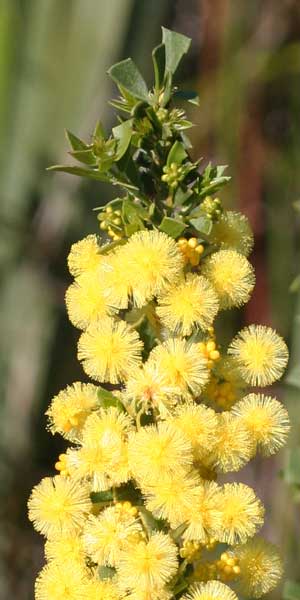
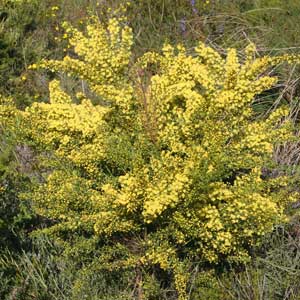
Acacia vestita - The Hairy Wattle or Weeping Boree
Common Name The Hairy Wattle or Weeping Boree
Size 3m high and 3m wide
Flowering begins in early August and continues until October. Bright yellow flowers are borne in dense globular heads 3 mm in diameter.
The foliage consists of phyllodes - flattened or modified leaf stalks which serve the same functions as leaves. The phyllodes are obliquely ovate-elliptical in shape, 1 - 2 cm long and 5 - 1 0 mm wide with a fine point. These small, soft, greyish phyllodes and branchlets are covered with tiny hairs. The weeping branches give the plant an attractive appearance even when it is not in flower, although when in flower it is among the more attractive wattles.
50482571818500Regular pruning is recommended to maintain a healthy bushy shrub and this should be done after flowering; old wood will not regenerate so this may be cut out completely provided that new shoots are present.
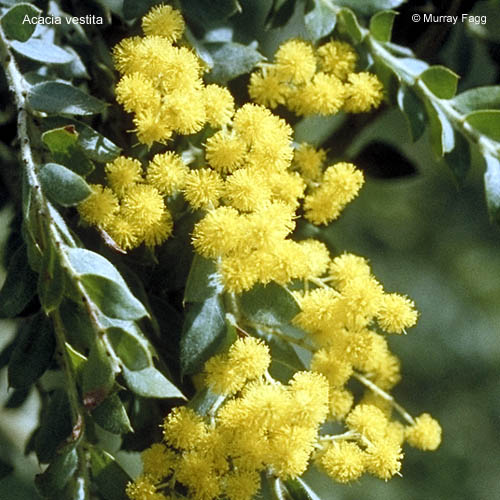
Allocasaurina cristata - Belah
Common Name Belah
Size 12 m tall
Conical tree to 12 m. branchlets tend to turn up at the ends of branches. Bears large ovoid fruits to 3 cm long.
Leaves reduced to scales sheathing the joints between the stem sections. Male and female flowers on different plants. Flowers tiny (less than 3mm across), cream to yellow or red to brown, with 0 petals. Male flower groups catkin-like, at the ends of the branchlets, female flowers clustered in heads at the ends of short side branchlets.
657225209042000

Anigozanthos flavidus - Kangaroo paw
Common Name Kangaroo paw
Size up to 1 m
Anigozanthos flavidus, commonly known as the evergreen kangaroo paw or the tall kangaroo paw, is from the family Haemodoraceae
The rhizome allows the species to regenerate after drought or fire. Each plant may produce over 350 flowers, on up to 10 long stems, these appear during the summer of the region. Pollen is distributed by birds as they plunge into the flowers to reach the nectaries. Flowers are frequently yellow and green, but may present in shades of red, pink, orange, or brown.[3] It is found along roadsides, along creeks, and in forests and swamps, and other unshaded winterwet habitat.[2]
73342522860000
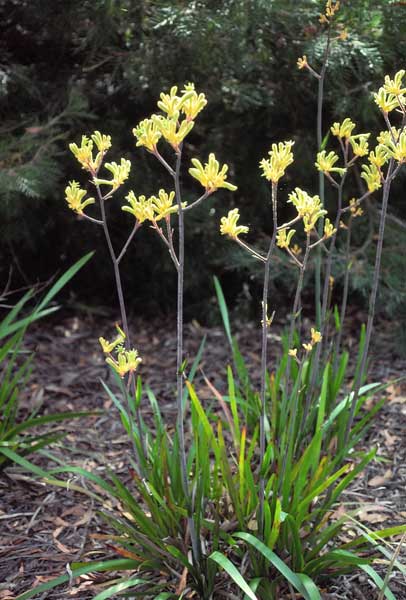
Brachychiton populneus - Kurrajong
Common Name Kurrajong
Size up to 20 m
Frost: tolerates frosts in the 0 to -5C range or heavy frosts colder than -5C
Flowers are bell-shaped and whitish in colour with the inner flower tube streaked purple-brown. Cultivated hybrids involving B. populneus display pink or red flowers. Seeds are borne within woody, boat-shaped fruit 1-7 cm long and are surrounded by fine hairs that can cause skin and eye irritation
Juvenile plants, which display attractive lobed leaves and swollen taproots, make good pot-plants tolerant of dry and pot-bound conditions that respond well to pruning.
Native populations on agricultural land are often retained to provide dense shade and drought fodder. Leaves lopped from branches are nutritious and desirable to stock, however consumption of the fruit may cause illness. The deep rooting trees have minimal impacts on cropping and also support honey production. Ground-up seeds can be brewed into a coffee substitute or added to bread. The swollen, carrot-like taproot is a nutritious and agreeable vegetable and the gum exudate is also edible. Kurrajong fibre taken from the stem has been used in twine and netting manufacture.
46672516954500
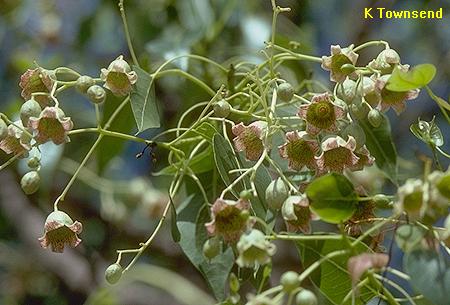
Callistemon citrinus - Lemon Scented Bottlebrush
Common Name Lemon Scented Bottlebrush
Size 3m wide by 3m high
A hardy shrub to small tree with crimson flowers in spring and occasional flowers in autumn. Regular pruning in early growth stages improves shape and appearance. Foliage is narrow pointed and turns from purplish pink to soft then dark green.
Good source of food for native wildlife. Prefers full sun in sandy moist well drained soils but is adaptable to periods of drought.
76200047498000
Callistemon pheoniceus - Fiery Bottlebrush, Scarlet Bottlebrush or Lesser Bottlebrush
Common Name Fiery Bottlebrush, Scarlet Bottlebrush or Lesser Bottlebrush
Size 2-4m high and 3.5m wide
The deep scarlet bottlebrush flower spikes are 4-6" long
Ideal for low windbreaks and screening. The rich scarlet flower brushes, 10 - 15 cm long, are dark tipped and borne terminally on the slender stems.
The flowering period is in November and December with a second flowering in late summer if conditions are favourable
294322532575500
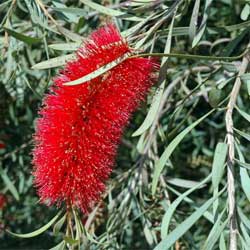
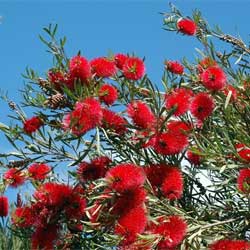
Callistemon sieberi - River Bottlebrush
Common Name River Bottlebrush
Size small shrub up to 2m
Callistemon sieberi, commonly known as river bottlebrush, is a shrub or small tree in the family Myrtaceae. It is native to Australia. The leaves are 20 to 50 mm long and 2 to 5 mm wide with pointed tips. Cream, pale yellow or pink flower spikes are mostly produced between November and January in the species native range. This bottlebrush shrub most often has yellow flowers but pale pink flowers are sometimes produced. The flowers are seen through Spring, Summer and Autumn and are up to 8cm long and 3cm in diameter. It sometimes has pendulous branches and grows to around 2 metres high and wide. This is a very hardy plant that occurs across large areas of Australia including NSW, Queensland, Tasmania, Victoria and the ACT. Its found growing naturally along creek banks and is suited to wet soils and for use around dams and water features.
344805070612000-46990047180500

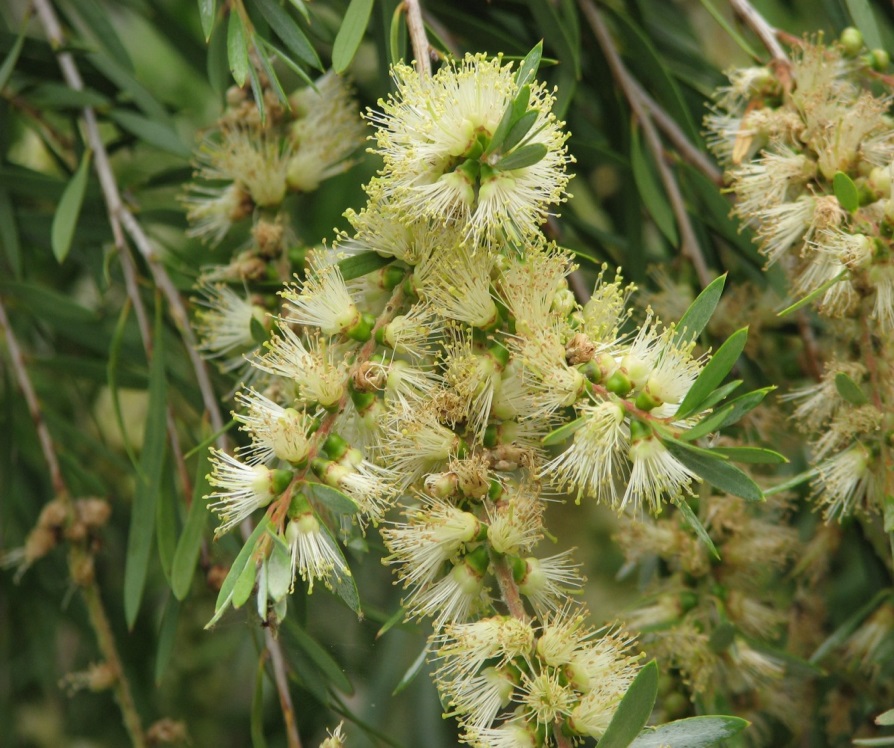
Callistemon speciosus - Showy Bottlebrush
Common Name Showy Bottlebrush
Size up to 2m wide and 3m high
Spectacular and profuse-flowering, the largest flower among all the bottlebrushes, with rich scarlet cylindrical brushes 25cm (10") or more in length at the ends of its branches from early Spring through Summer.
Attracts nectar feeding birds. Very adaptable to damp conditions (sometimes found thriving in water) or to drier conditions. Will thrive in most areas including coastal.
120015037274500
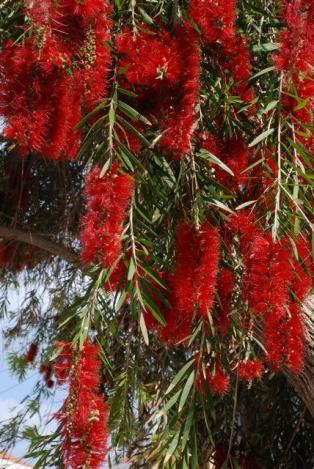
Callistemon viminalis - Weeping Bottlebrush
Common Name Weeping Bottlebrush
Size up to 8m
Weeping Bottlebrush grows up to 8 metres in height and has pendent branches with leaves which are 3 to 7 cm long and 3 to 7 mm in width. The bright red flower spikes, which are 4 to 10 cm in length and about 3 to 6 cm in diameter occur between spring and summer.
Flowering: spring to early summer, also sporadically throughout year
-21907557213500293370061976000
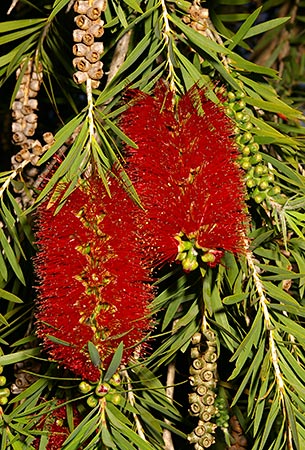
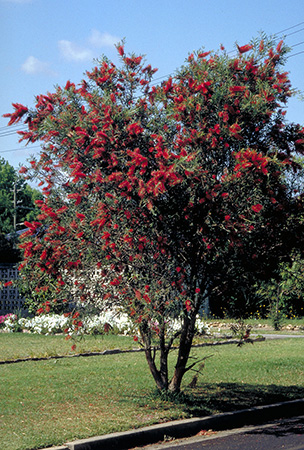
Callitrus glaucophylla - White Cypress Pine
Common Name White cypress Pine
Size to 20 m tall
Has conical shaped bluish-grey foliage. Ovoid cones to 2.5 cm diameter.
The tree is drought hardy and the timber is commercially valuable it is termite and fungal resistant.
6667570866000323850070866000
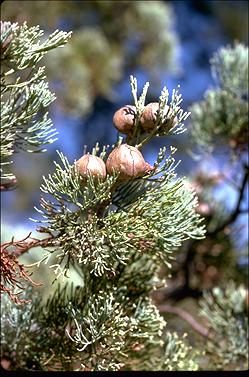
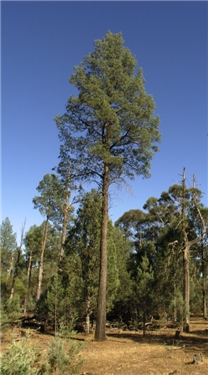
Callitrus glaucophylla - White Cypress Pine
Common Name White cypress Pine
Size to 20 m tall
Has conical shaped bluish-grey foliage. Ovoid cones to 2.5 cm diameter.
The tree is drought hardy and the timber is commercially valuable it is termite and fungal resistant.
6667570866000323850070866000
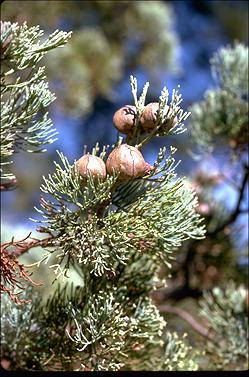
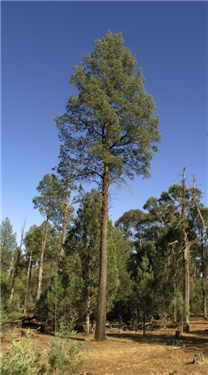
Calotis cuneifolia - Purple Burr Daisy
Common Name Purple Burr Daisy
Size to 60 cm
Small erect or perennial herb slightly woody at the base.
Purple, blue or white daisy flowers with yellow centres, forming spiny burrs that break into
Numerous sharp spined seeds at maturity.
Important understory providing nectar and pollen for native butterflies, moths, beetles and
other insects.
280416061087000-21526554102000
Allocasuarina diminuta - Sheoak
Common name Sheoak
Size Small to medium upright shrub
Flowers Autumn-Winter
May attract cockatoos to parks and gardens. A fairly dull looking shrub but the male plants are attractive in a rusty kind of way when in flower.
Very useful plant for revegetation of eroded sites, quarries and mines with rocky, skeletal substrates without topsoil.
186690090741500
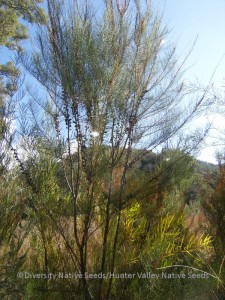
Gossypium sturtianum - Sturt's Desert Rose, Darling River Rose, Cotton Rosebush, Australian Cotton
Common Name Sturts Desert Rose, Darling River Rose, Cotton Rosebush, Australian Cotton
Size 1-2 m high and 1-2 m wide
Sturts Desert Rose is the floral emblem of the Northern Territory
Plants can have a life cycle of up to 10 years. Its elegant pink-mauve flowers have deep red bases forming a contrasting centre, although they vary widely in hue. Flowers can be seen for most of the year but peak in late winter and only last a day or two of blooming. There is a small cotton spore in the centre of the flower.
They are drought tolerant, being able to conserve and store water. Also they have internal water storage, reducing the need to rely on regular rainfall. These sources can be in the trunk or root system. Finally, deep root systems enable them to tap water from deep underground.
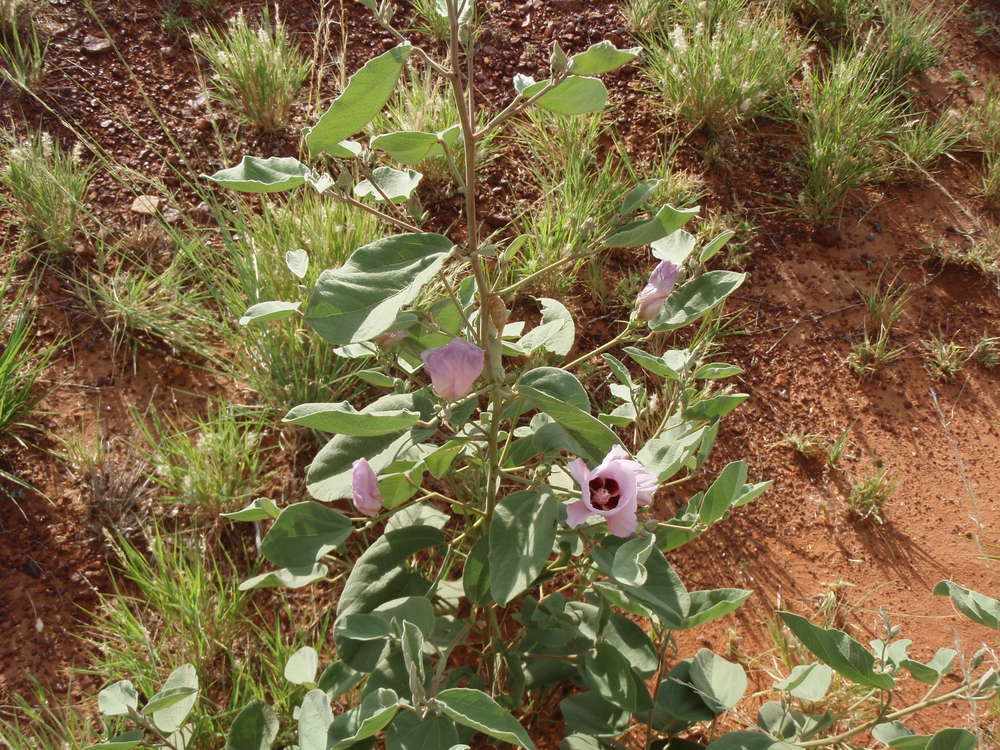
Craspedia glabosa - Drumsticks
Common name Drumsticks
Size up to 80 cm high
Drumsticks are drought tolerant so are useful in a rock garden or in dry areas of a border planting.
The tiny cup shaped, mustard yellow flowers appear in summer. The light green long narrow, strap shaped leaves are smothered in white hairs that gives them a woolly appearance.
Craspedia grow in a wide range of soil types including sand gravel and loam.
28575005397500
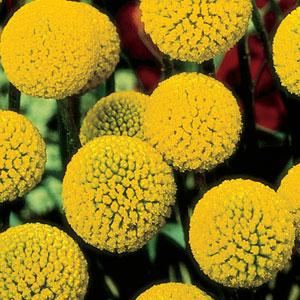
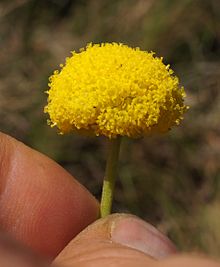
Dianella longifolia - Smooth Flax Lily
Common Name Smooth Flax Lily
Size approx. 80 cm in height.
Versatile strappy green leaved native grass with pretty purple/blue star shaped flowers that sit on flower spikes above the folage. Flowers are followed by attractive purple berries. Great choice for dry shade, revegatation works and for vertical accent. Plant 30cm apart for mass planting.
Dianella revoluta - Blueberry Lily, Blue Flax-lily, Black Anther Flax-lily or Spreading Flax-lily
Common Name Blueberry lily, Blue flax-lily, Black Anther flax-lily or Spreading flax-lily.
Size 1 m high and a diameter of 1.5 m
This species flowers from spring to summer and has deep blue to purple inflorescences. The flowers stalks rise on wiry stems from the foliage, frequently exceeding it in height. The racemes are terminal panicles measuring up to 1.7m, branching several times into open sprays with one flower a day opening. The fruit are blue to purple and persist for many months after the flowers.
01638300029622758763000
Dickondra ripens - Kidney Weed
Common Name Kidney Weed
Perennial herb with creeping stems, rooting at nodes.
Leaves with lamina reniform to oblong-circular, 525 mm long and slightly broader, apex rounded to emarginate, base cordate, both surfaces sparsely to moderately pilose; petiole much longer that lamina.
Flowers are solitary, pale greenish yellow.
65722592837000

Dodonaea viscosa - Sticky Hop Bush
Common Name Sticky Hop Bush
Size 5 m high and 1.5 m in diameter.
Dodonaeas are known as hop bush as they were used to make beer by early European Australians. Dodonaea viscosa has also been traditionally used by Aboriginal Australians to treat toothache, cuts and stingray stings.
can handle varying degrees of drought. In general, Dodonaea viscosa is an extremely hardy species and is able to resprout from the base. Other desirable features include its successful use as a hedge due to the dense habit.
3276600122809000-228600110426500This species prefers well-drained soils and requires a well-lit area. It can tolerate part shade but the capsules will not be as spectacular in colour if shaded. This species can tolerate dry conditions and can also handle some frosts. Little maintenance is necessary. However, regular tip pruning will promote growth and branching. Scale may be an issue due to the viscous leaves. If this is the case, an application of white oil is an effective remedy
Male Flowers
Female Flowers
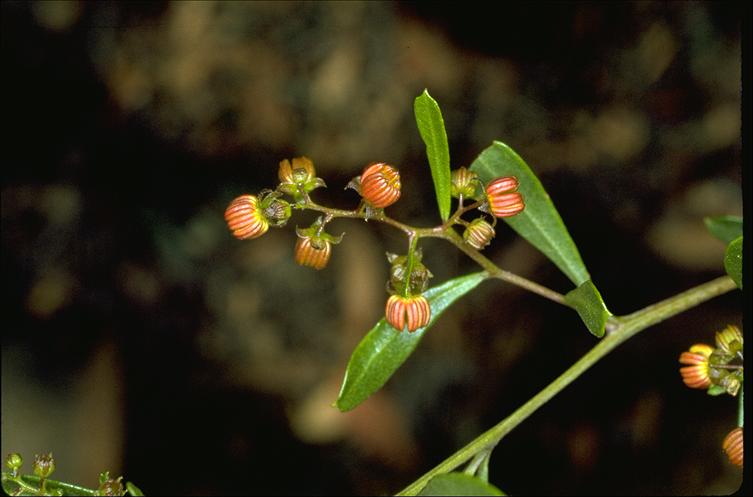

Eucalyptus blakelyi - Blakely's Red Gum
Common Name Blakelys Red Gum
Size up to 25m
Eucalyptus blakelyi flowers mainly during November to December. Abundant flowering in this species occurs on a 2-3 year cycle, depending on seasonal conditions Eucalyptus blakelyi is frost and drought tolerant and can be grown on relatively heavy soils. It is an important species in the honey industry as it provides a valued source nectar and pollen for bees . The wood is dense, very durable and is used for fencing and firewood . On land cleared for agriculture, remnant trees of this species have value in providing shade and shelter for stock.
149542523114000

Eucalyptus sideroxylon - Mugga, Red Ironbark or Mugga Ironbark
Common Name Mugga, Red Ironbark or Mugga Ironbark
Size up to 25 m
Eucalyptus sideroxylon, or Mugga, Red Ironbark or Mugga Ironbark, is a small to medium-sized or occasionally tall tree. The bark is persistent on the trunk and large branches, hard and deeply furrowed, dark grey to black, with upper limbs smooth and whitish.
Flowers are white, pink, red or pale yellow from early autumn until mid-spring.
-18097568770500
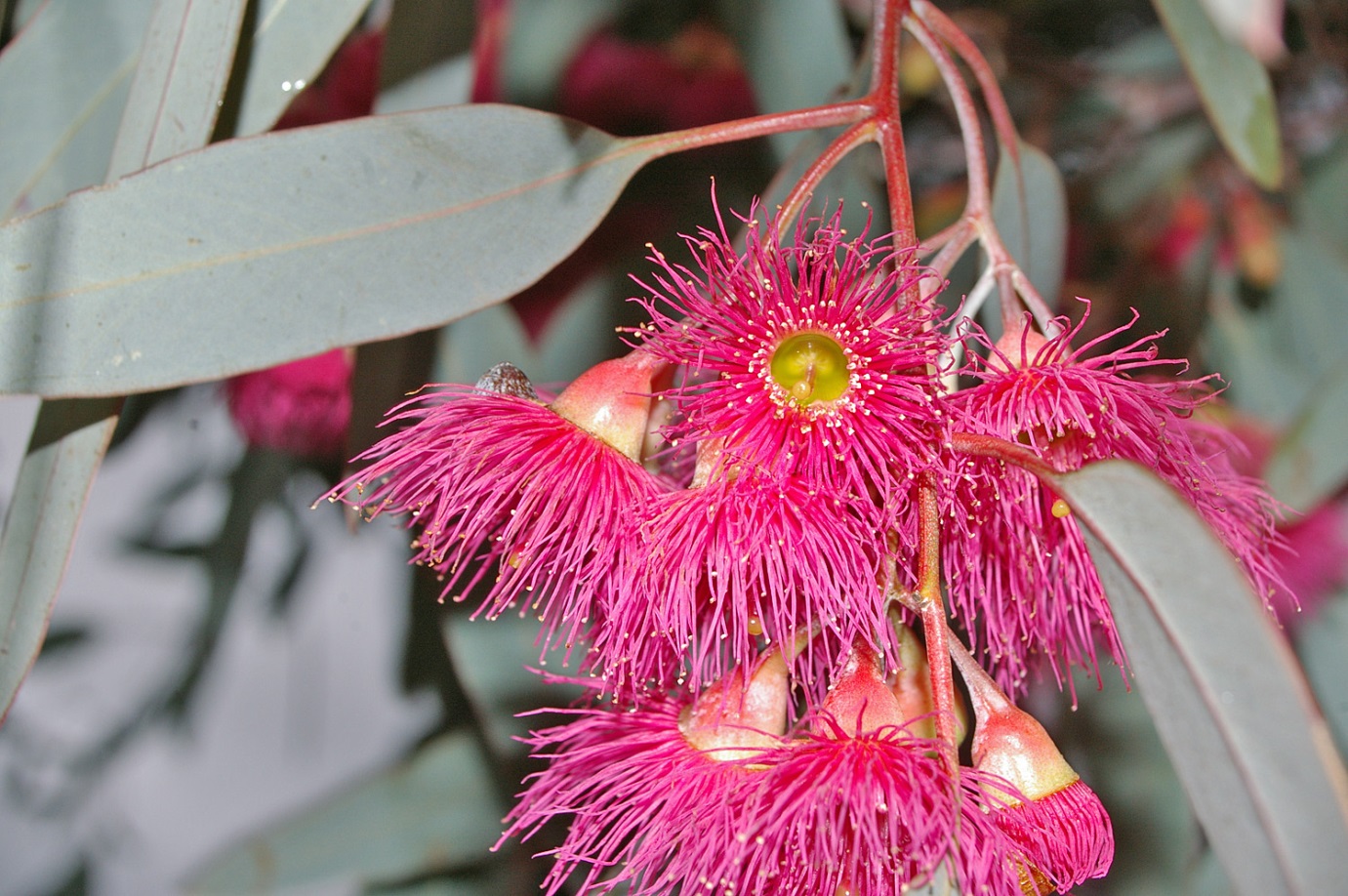
Eutaxia microphyllia - Mallee Bush-Pea, Eutaxia
Common Name Mallee Bush-Pea; Eutaxia
Size A small spreading shrub growing to 1.5m in height and width.
The narrow leaves are grey-green, sometimes tinged with bronze and crowded on the branches.
Flowers are yellow; and purple, red, or brown. Flowers pea-shaped, with five petals, two almost joined together. Flowers single or in pairs, the stalks arising from the bases of the leaves
Tolerant of drought, frost or waterlogging and poor soils.
77152591313000
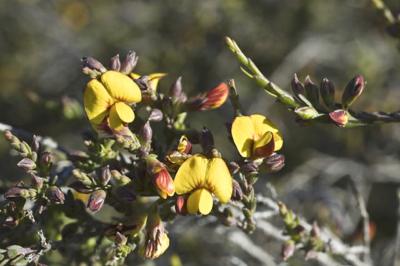
Glycine clandestine - Twining Glycine
Common Name Twining Glycine
Glycine clandestina is a slender twiner, common in moist conditions on shaded hillsides and coastal forests, in grassland, heath, woodland and forest.
The stems and branches are hairy. The dark green leaves consist of 3 short-stemmed leaflets, varying in shape from linear to lanceolate, 1 to 4 cm long and 4-10mm wide.
The small pea flowers of Glycine clandestina vary from pale pink through mauve to pale blue and grow in the upper leaf axils in small loose clusters.
Glycine clandestina flowers all year round.
-171450711835002110105206438500


Goodenia hederacea - Ivy Goodenia
Common Name Ivy goodenia
Goodenia hederacea is a prostrate to ascending perennial herb. Its long trailing stems often root at the nodes, grow up to 80cm long, and are cottony hairy. Leaves are irregularly toothed, non-hairy above, and often non-hairy or cottony below. Fruit is ovoid (egg shaped) and 5-9mm long. Flowers are deep yellow, 8-15mm long and arranged in a terminal leafy raceme.
3296285153670001524004889500
Hakea francisiana - -
Size grows up to 4 metres high.
The flowers of Hakea francisiana occur in large racemes up to about 100 mm long which are seen in the leaf axils in winter and spring. The flower colour is usually red or reddish purple but the form previously known as H.coriacea is usually cream flowered with a pink centre
Flowers are followed by woody seed pods about 20mm long containing two winged seeds, the usual number for all Hakea species. The pods do not shed the seed until stimulated to do so by environmental conditions (eg after a bushfire).
2790825114998500-238125114998500The species is tolerant of at least moderate frosts and the flowers are attractive to honey eating birds. The species grows and flowers best in an open, very well drained, sunny position but it will tolerate some shade.
Hakea laurina - Kodjet, Pincushion Hakea or Emu Bush
Common names Kodjet, Pincushion hakea or Emu bush.
Size height between 2.5 and 6m
Flowers are initially pale or cream, perhaps hidden by the leaves in the early stages, and are contained by scale-like bracts before opening. These are deep pink to red on the globular centre, a clustered flowerhead at the leaf axils, pale styles emerge from these. This resembles a pin cushion. Nectar and a slight fragrance is produced from the flowerheads. The flowering period occurs between April and August. The leaves vary in size on the plant, they may be 629 mm wide and reach 180 mm in length. Adaptable to a number of soil types, the plant is also tolerant of frost.
055562500
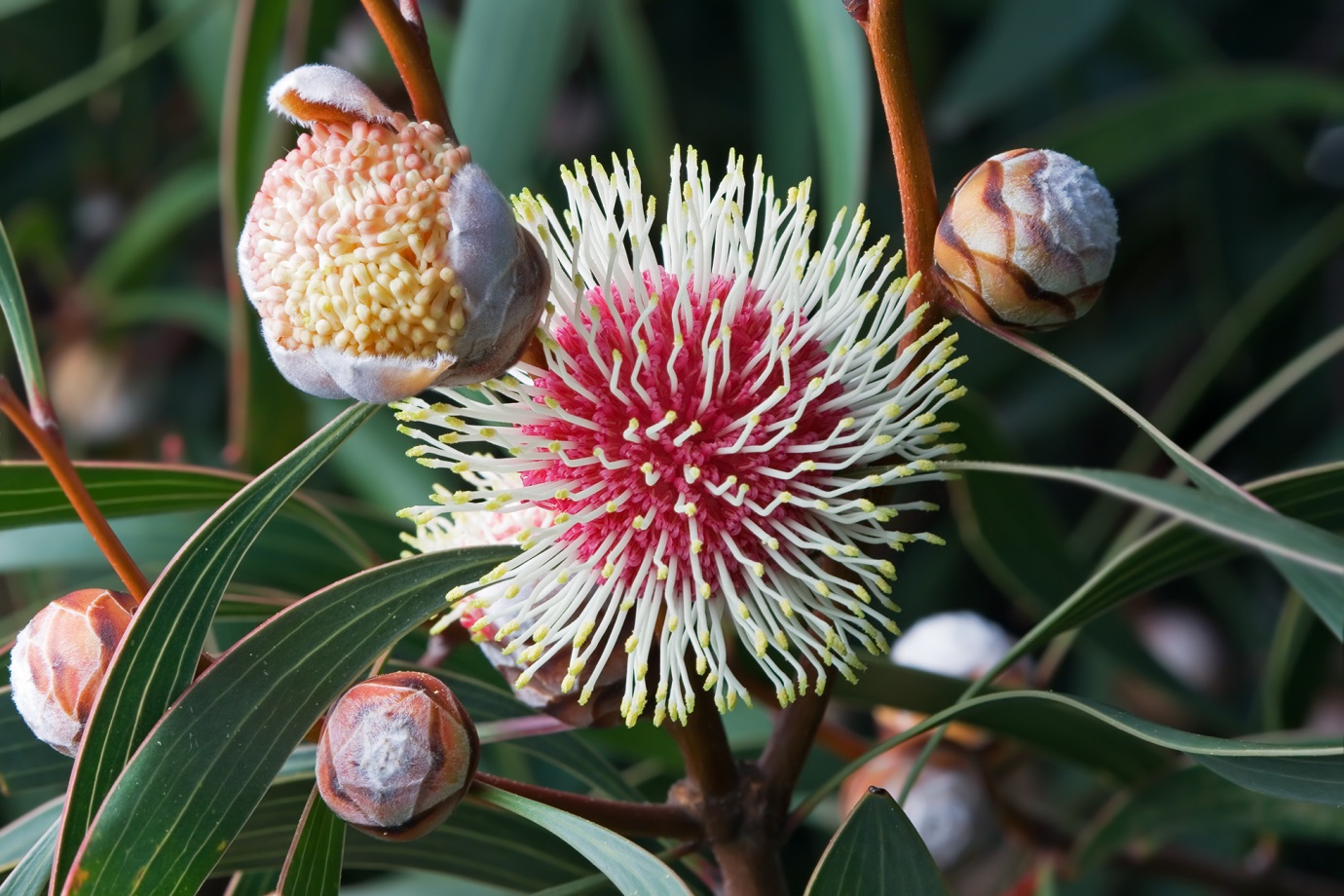
Hakea multilineata - -
Size 2.5 to 5m in height
Bears long spikes of red or pink flowers to 15 cm, in winter and spring.291465014839950085725146431000
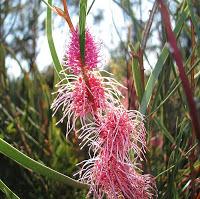
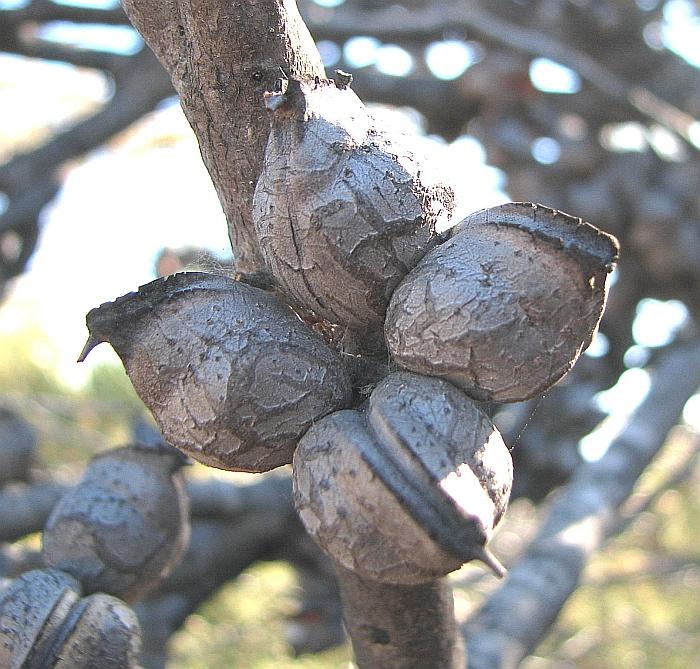
Hakea salicifolia - Willow-leafed hakea
Common name Willow-leafed hakea
Size Up to 5m
H. salicifolia is a fast-growing, upright shrub that can grow up to 5m tall. The flat and elliptical leaves are widest in the middle and can grow up to 12cm long.[2] New growth on the Willow-leaved Hakea is rose coloured. During the spring the Willow-leaved Hakea has pale yellow to white flowers which appear in small dense clusters among the leaves.
3105150112903000046228000
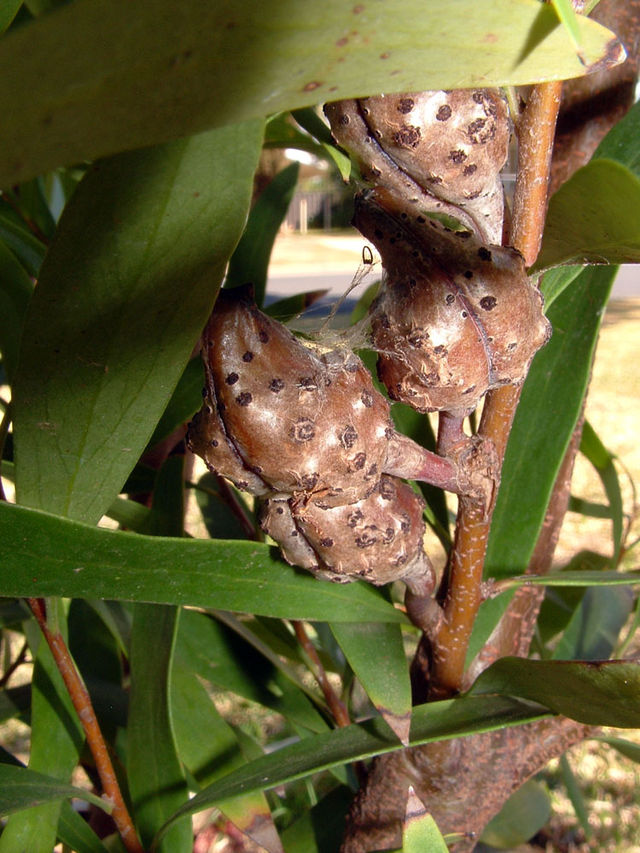
Hakea trifurcata - Kerosene Bush
Common name Kerosene Bush
Size 1.5 -3m high to 3.5m wide
Hakea trifurcata is rounded or open in habit, with both terete (needle-like) and flat, elliptic to obovate leaves. It grows to 3 metres in height and to about the same width. The flowers are cream, white or pink, often with red styles. Flowers appear between April and October, being nectar producing with a strong sweet secent sweet s [3]
Two-leaved Hakea usually lacks a lignotuber and will grow in a variety of soils.27622599504500
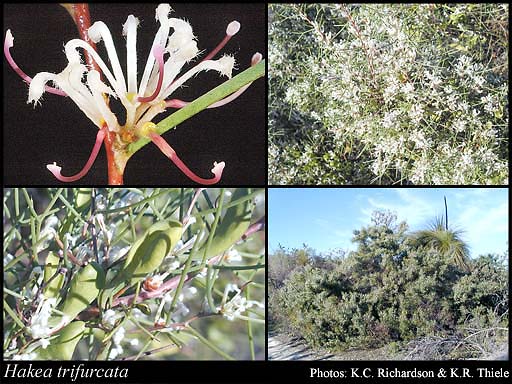
Hardenbergia violacea - Happy Wanderer
Common name Happy Wanderer
A widespread species occurring in Queensland, New South Wales, Victoria, Tasmania and South Australia. It occurs in a variety of habitats from coast to mountains, usually in open forest/woodland and sometimes in heath.
Hardenbergia is a small genus of three species, the most common and best known of which is Hardenbergia violacea.
Hardenbergia violacea is usually a climbing plant whose branches twist around the stems of other plants. It is moderately vigorous but rarely covers other plants so extensively as to cause damage. Shrubby forms without any climbing tendency are known. The leaves are dark, glossy green with prominent veins and are 75-100 mm in length.
77152543624500
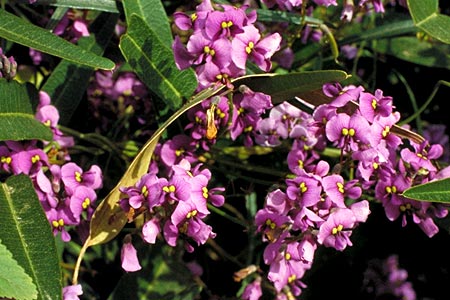
Indigofera australis - -
Indigofera australis is a small to medium shrub, often of upright and straggly habit. The leaves are pinnate, 50-100 mm long, with up to 21 egg-shaped to narrowly oblong leaflets which are slightly hairy. The flowers occur in elongated clusters from the leaf axils. They are pea-shaped, pink or purple in colour (occasionally white) and about 12 mm across.
This is a fairly variable species and some forms make better garden subjects than others. It is a hardy plant in most well drained soils in full sun or (preferably) semi shade and is tolerant of at least moderate frost. Plants can be pruned fairly heavily to make a more compact and leafy shape but pruning into old wood should be avoided. Plants will withstand extended dry conditions once established but adequate watering improves appearance.
38100052768500
Indigofera australis - -
Size 2m high and 2m wide.
The leaves are pinnate, openly spaced on the stems, around 10 cm long and velvety smooth to the touch. The flower color is unusual, ranging through soft purple hues, often pinkish and a change from other species flowering at the same time. The flowers are smooth, in short spires in the leaf axils, freely produced and showy, outlining the curves of the stems. They may open at any time from mid-September and may continue till November in a cool spring.
171450032639000It can regrow and sucker from rootstocks and lateral roots after fire.
-250190231775000
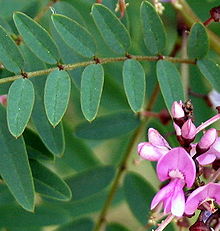
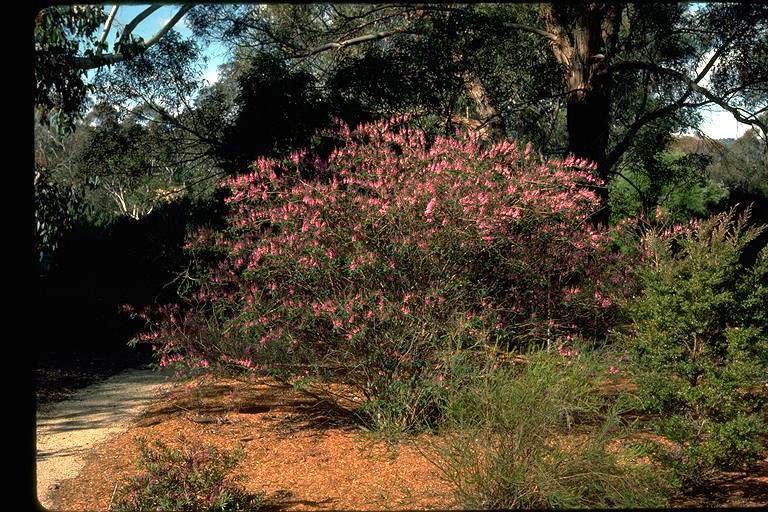
Isopogan formosus - Rose cone
Common Name Rose cone Flower
Size 1.5- 2 m in height
The leaves are divided and crowded along the stem. The divided segments are a narrow, grooved, terete (cylindrical) and are about 5 cm in length. The young growth is silky-hairy, often reddish and is a particularly attractive feature of the plant.
The flowers are a rose-pink to pale pink in colour and are clustered together to form a flower head at the ends of branches. The flowers bloom in winter and spring and droop downwards once they open. The styles are long, bright yellow aging to a red colour. Globular cones are borne terminally in the leaf axils in late winter - spring they are 1.5-2 cm in diameter. The fruiting cone is held on the plant for some time before breaking up.
Isopogon formosus prefers full sun to partial shade in a well-drained sandy or gravelly soil.
It will tolerate light or moderate frosts but will not tolerate heavy frosts or extended periods of dryness
13239759017000
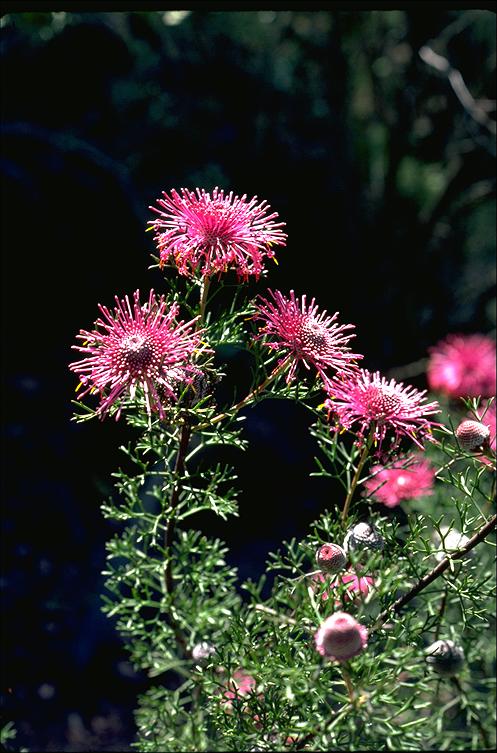
Kennedia coccinea - Coral Vine
Common Name Coral Vine
2540208915000Kennedia coccinea (Coral Vine) is a species of flowering plant in the family Fabaceae, endemic to the south-west of Western Australia. It is a low growing trailing shrub or climber which has twining rust-coloured branchlets with rounded leaflets that are about 1.5 cm long and occur in threes.[1] Orange red or scarlet pea flowers are produced in clusters between August and November in its native range.
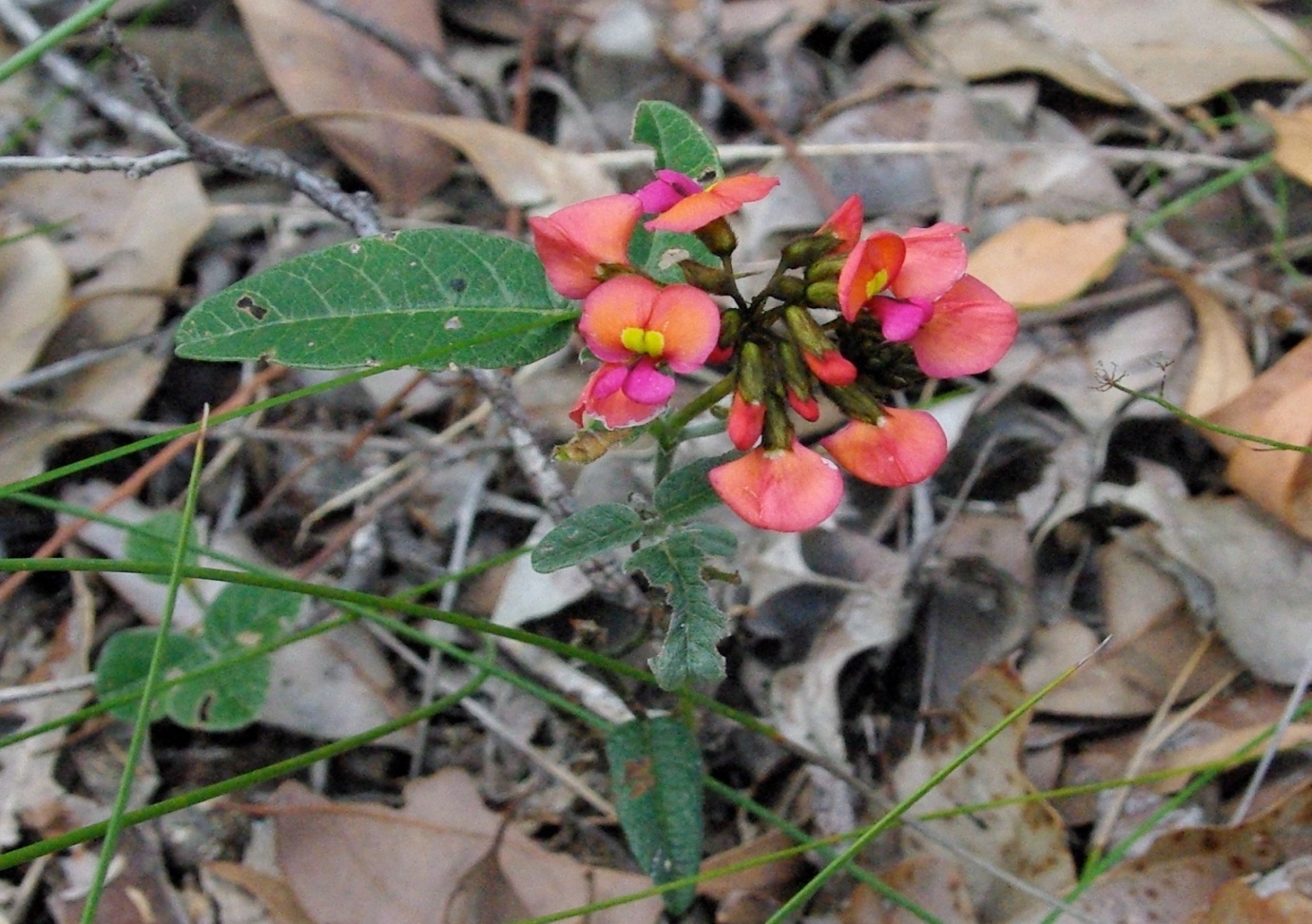
Kunzea pulchella - Granite Kunzea
Common Name Granite Kunzea
Size 0.6 to 3 m in height
Kunzea pulcella (Granite Kunzea) is a shrub in the family Myrtaceae. It is endemic to the south-west of Western Australia, where it occurs on granite outcrops and slopes.
It is one of two Kunzea species that produces red flowers (the other being Kunzea baxteri) although white and cream coloured forms are also known. The flowers are produced between June and November in its native range.
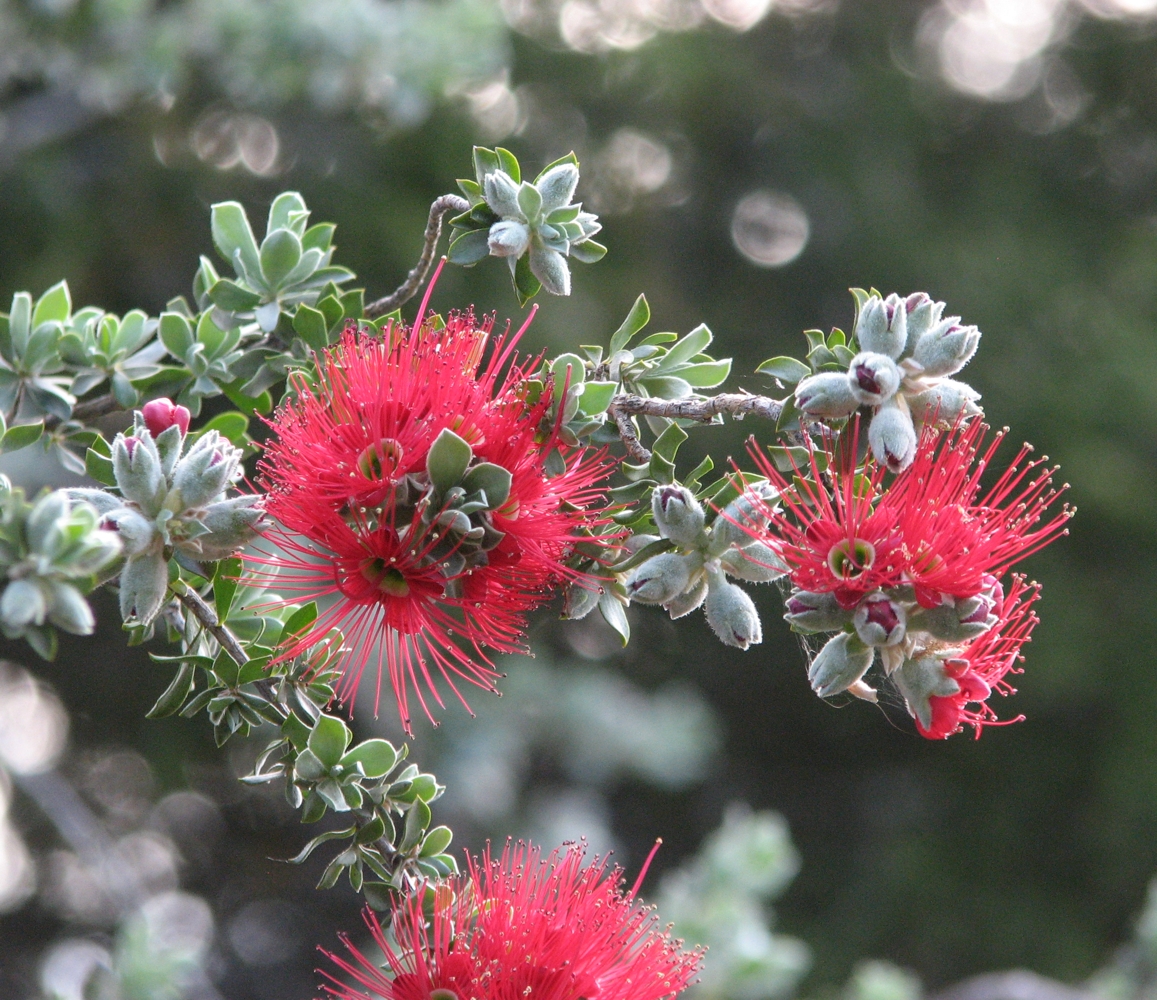
Linem - Native Flax
Common name Native Flax
Size 60-80cm in height and 30 cm wide
. In spring (Sept-Nov) lovely open bright blue 5 petalled flowers with darker blue venation are held above delicate small blue green leaves. Perfect for a cottage look or a meadow look in your garden. The plant dies back after flowering and old stems can be cut back in autumn.
It is found across temperate parts of Australia and New Zealand growing in open woodland and grassland and will tolerate full sun to light shade. It has a high frost tolerance and medium tolerance to heavy soil, coastal conditions and drought. It will tolerate temperatures in the mid 30s to low 40C for short periods of time but requires watering over long dry periods.
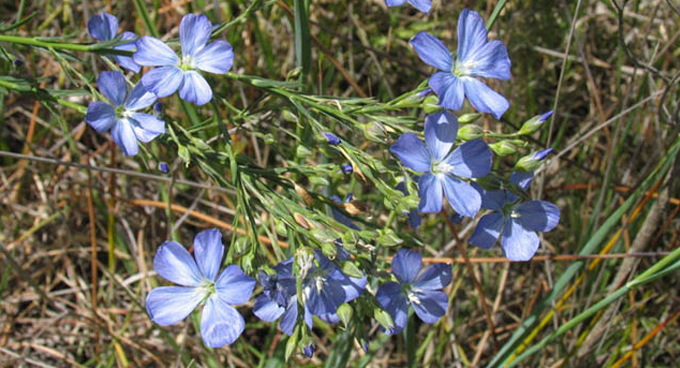
Lomandra filoformas - Wattle Mat Rush
Common Name Wattle mat rush
Size up to 50 cm in height and up to 20 cm in diameter.
The leaves are stiff, approximately 3mm to 5mm in width, with inrolled margins and are dull green to bluish-green in colour. Each leaf is tipped with one to three tiny light brown points. This plant spreads by underground creeping rhizomes and when affected by fire will re-establish from these.
This species becomes noticeable at flowering time - mainly from October to November, but this may vary according to locality. The flowers are cream to bright yellow, hence the common name. The male flowers are ball shaped, up to 2mm in length, while the female flowers are more tubular, up to 3mm in length.
This plant grows well in full sun or part shade and can tolerate a range of temperatures from extreme highs to lows. It is exceptionally drought hardy and tolerant to frost.
30194253048000028575030480000
Lomandra longifolia - Spiny Mat Rush or Basket Grass
Common Name Spiny Mat Rush or Basket Grass
L. longifolia is a perennial, rhizomatous herb. Leaves are glossy green, shiny, firm, flat. They can grow from 40cm up to 1m long and 8-12mm wide and are usually taller than the flowering stem. Leaf bases are broad with yellow, orange or brownish margins and the tips of the leaves are prominently toothed.
The inflorescence is usually a panicle of clusters of sessile flowers. Each cluster has a sharp, slender, straw-colored bract at its base, which gives it a dense spike-like structure. The inflorescence is usually about half the leaf length (500mm) and individual flowers are about 4mm long. Flowers of L. longifolia are scented and dioecious, with the female flower often a little bit longer or larger than the male flower. The heavy-smelling nectar on flowers can attract pollinating beetles. Flowering in warm temperature (late winter/early spring), fruiting occurs 1-2 months after flowering
283845010287000
Melaleaca lateritia - Robin Red Breast Bush
Common Name Robin Red Breast Bush
Size 1.5m high and 1m in diameter
Is an erect shrub and although rarely exceeding 1.5 m high by 1 m in diameter in Canberra, often reaches over 2 m in damp situations in the south-west. Its habit is usually open and without pruning it may become untidy and woody at the base. With regular tip pruning, a more compact shrub is obtained.
The main flowering period is summer, but some blooms are seen through to autumn and early winter when frost often destroys developing buds. Frost, however, is not an extreme problem as the shrub's vigour is not affected
7334252730500
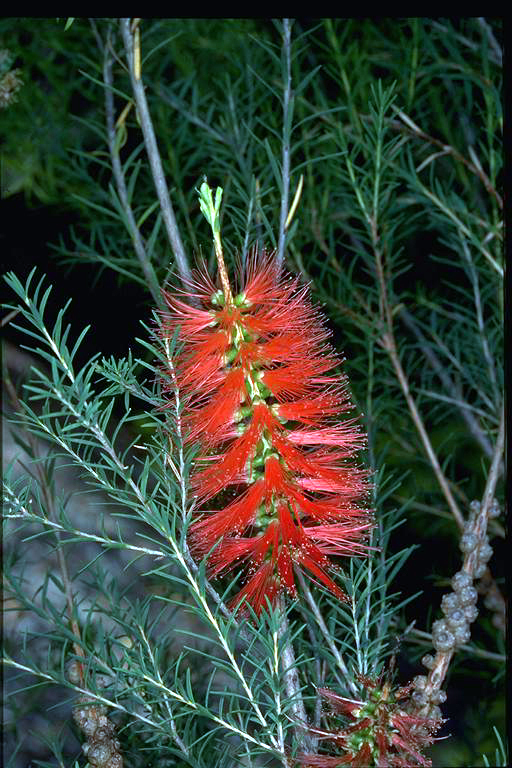
Melaleuca stypheliodes - Prickly Paperbark
Common Name Prickly Paperbark
Size 8-10m high and 6-8m wide
The Prickly Paperbark or Prickly-leaved Tea Tree is a tall upright shrub or tree with papery white or light brown bark that peels off in large strips. The leaves are alternate and ovate, growing to 7mm to 15mm long and 3mm to 6mm wide. There are 1530 veins along the length of the leaves. The leaves have pointed tips. Flowers are produced in 2cm long bottlebrush-shaped flower spikes in spring and summer. the flowers are usually in groups of three. Petals are almost circular and about 1mm to 2mm long. The ovoid fruits are grey-brown, woody capsules and about 2mm to 3mm in diameter.
017081500
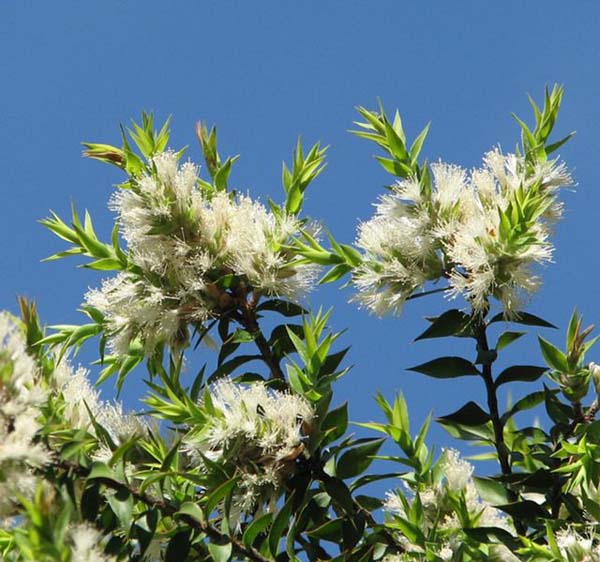
Mentha satureioides - Creeping Mint, Native Pennyroyal
Common Name Creeping Mint Native Pennyroyal
Mat-forming herb, rhizomatous and often producing ascending to prostrate branches at nodes; branches glabrous or covered with short spreading hairs
226695073215500
Pandorea pandorana - Wonga Wonga Vine
Common Name Wonga Wonga Vine
Pandorea pandorana ranges in habit from a scrambling plant to a vigorous vine, growing on larger trees in forested habitats. It has glossy green leaves arranged oppositely along the stem. The pinnate leaves are around 816 cm (36.5 in) long and have 39 leaflets of varying widths. The juvenile leaves are finer and have serrated margins, and more finely divided into 713 leaflets. Flowering occurs in spring
15240008445500
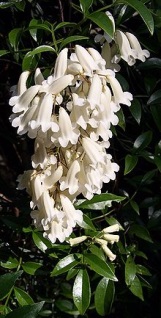
Passiflora herbertiana - -
A rare passion fruit native to Australia. Fruits are green-skinned, white fleshed, with an unknown edible rating. Some sources list the fruit as edible, sweet and tasty, while others list the fruits as being bitter and inedible.
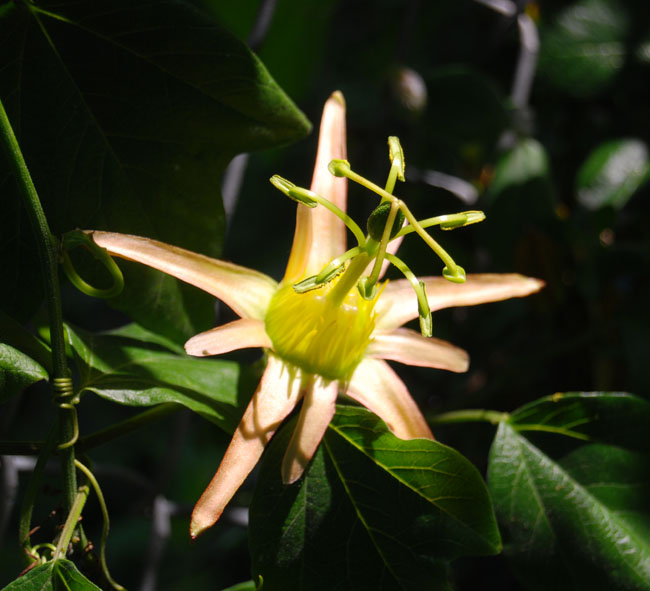
Purple callistemon - -
Size 2-4m wide and 2-4m height
-133350185166000Callistemon 'Purple Splendour" is a dense bushy shrub with clusters of red purple bottlebrush flowers with yellow tipped stamens in spring. There are a number of similar cultivars including Callistemon "Violaceus", "Purple Cloud" and "Mauve Mist"
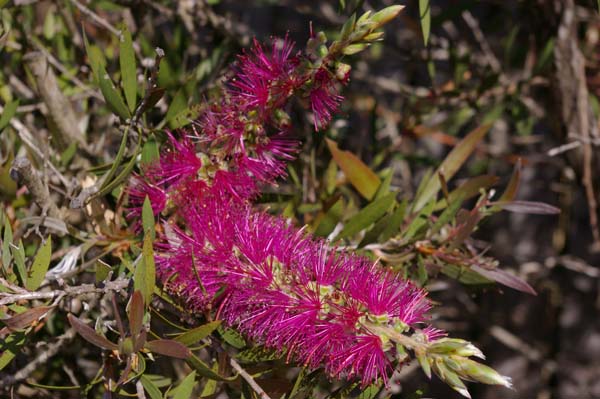
Senna aciphylla - -
Size 1 m high and 1.5m in diameter.
2686050165862000-276225134493000Dark green, pinnate leaves with pointed leaflets. Yellow flowers occur in spring. Frost tolerant.
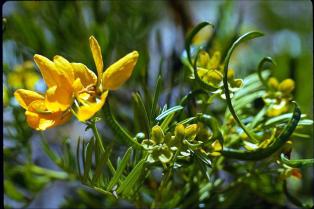
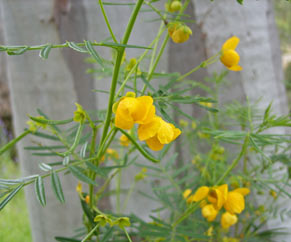
Senna artemisoides - Silver Cassia, Silver Senna
Common Name Silver Cassia, Silver Senna
Size up to 2 m in height.
Is a small woody shrub with a silvery appearance created by short white hairs on the branchlets and leaves. Leaves are pinnate, 2-4cm long with 4-8 pairs of leaflets. These are narrowly cylindrical, grey green or silvery, 1-4cm x0.2-0.3cm.
Bright yellow flowers about 1.5cm diameter are borne in small clusters in the leaf axils. These are followed by straight, brown pods 4-8cm x 1cm.
55245039624000
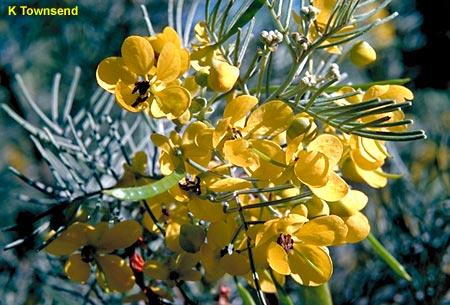
Stypendra glauca - Nodding Blue Lily
Common Name Nodding Blue Lily
Size 0.6 to 1.5 m in height
Although it has the appearance of a shrub, S. glauca is actually a multi stemmed tufted plant. It has long lanceolate leaves which hug the stem. The leaves are generally blue/green in colour, with some variation upon this theme. Older leaves turn brown/black, which gives the plant a striking appearance. The pretty flowers of S. glauca droop terminally from slender stalks; they are usually blue in colour or occasionally white. The flowers are bisexual with prominent yellow filaments. Flowering occurs in early spring, less often in winter. The fruit is a black capsule and leathery in appearance. Stypandra glauca also reproduces asexually via rhizomes. Stypandra glauca tolerates drought and frost extremely well, making it a good choice for modern gardens
-10477522034500
3797304318000
Viola betonicifolia - -
This species is distinguished by long, slender arrow-shaped leaves grow from the base of the plant, which has no stem as such, and are up to 6 cm (2.4 in) long with a v-shaped sinus at the base, and are usually rather bright, fresh green. Its striking bright purple flowers are 1-1.5 cm in diameter and occur in spring and summer.[1] Flowers are followed by small pale brown pods with tiny blackish seeds.
Viola betonicifolia is an easy plant to grow, and adaptable to different soil types as long as it get sufficient moisture and at least half shade or more in a garden situation. It is good for rockeries. It can be quite vigorous in heavier, moisture retentive soils and forms clumps to about 30 cm (12 in) diameter. It is self-seeding.[4]
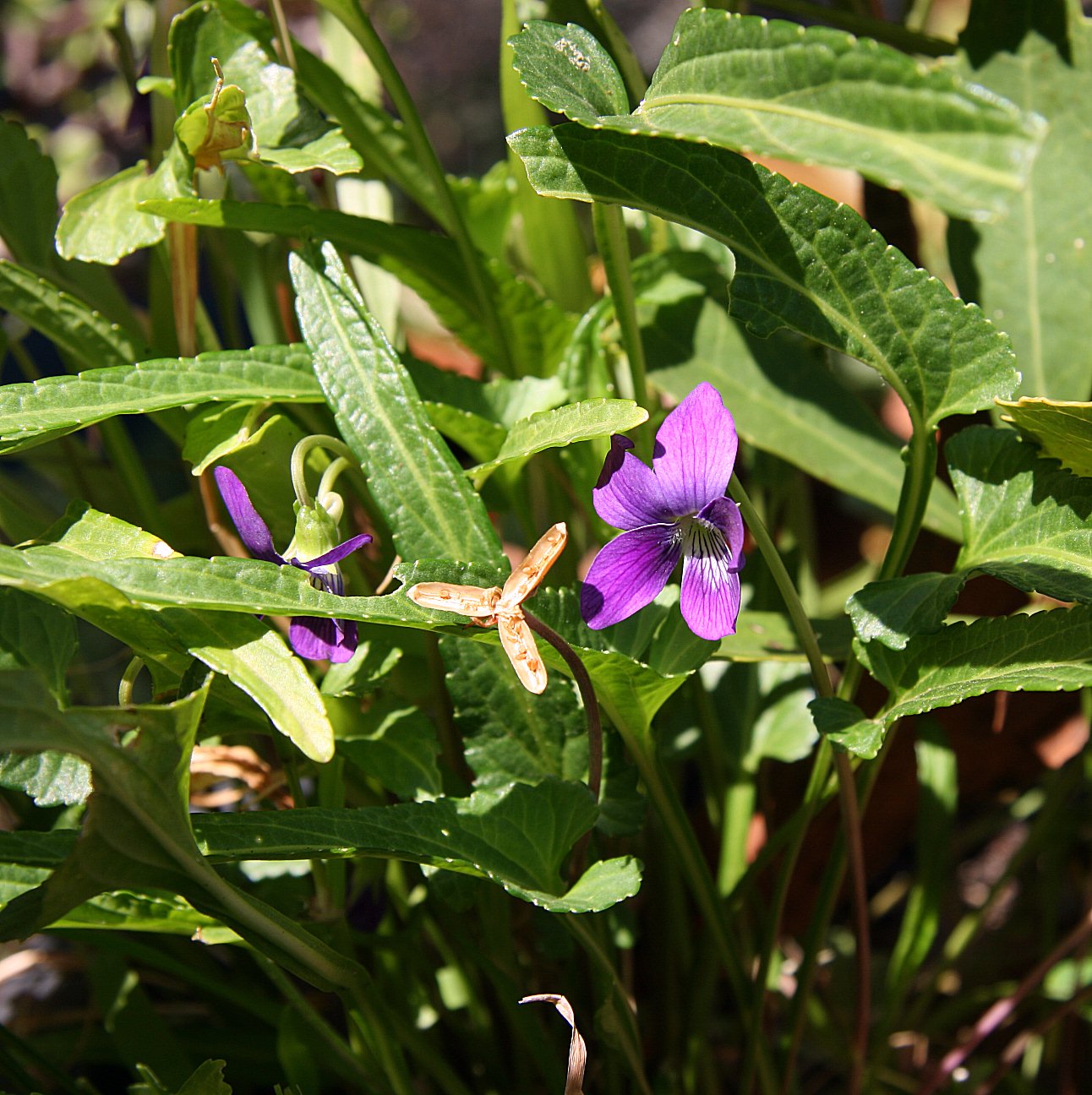
Vittadinia cuneata - New Holland Daisy
Common Name New Holland Daisy
Size 10- 40 cm in height
Woody annual or perennial herb, stems rigidly erect, hirsute with glandular hairs.
Leaves subconduplicate, cuneate or oblanceolate, 1025 mm long, 25 mm wide, apex apiculate, recurved, margins entire or with 2 small lateral lobes.
Heads 58 mm long; involucral bracts acute, indumentum as for leaves, variable for different varieties (see below). Ray florets pale blue to mauve.
Achenes linear to oblanceolate, 47 mm long, marginal ridges thin; ribs all extending to the summit, pubescent; pappus bristles 48 mm long.
14097006286500
Acacia buxifolia - Box Leaf Wattle
Common Name Box Leaf Wattle
Size 1- to 4 m in height
1323975105410000The bright yellow spherical flower heads appear in groups of 2 to14 in the axils of the phyllodes from July to November in the species native range, followed by straight or curved seed pods which are 30 to 70 mm long and 5 to 8 mm wide.
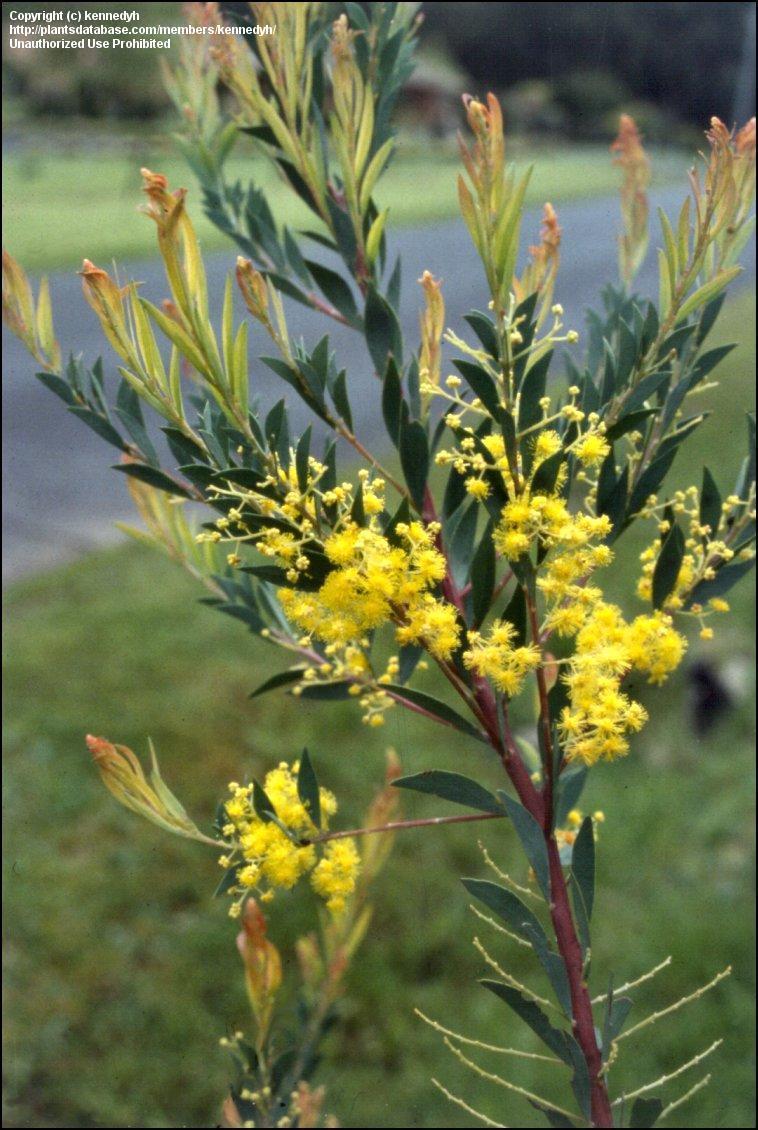
Acacia deanei - Deans Wattle
Common Name Deans Wattle
Size 2 to 7 m in height
Leaves feather like, yellow green when young. Golden yellow to whitish flower balls mainly in winter but also spasmodically during the year in response to rain. Extremely tolerant of droughts and wind.
1066800-190500
Acacia doratoxylon - Currawong
Common Name Currawong
Size up to 12 m
Acacia doratoxylon is a nitrogen-fixing, small tree, which can be grown on well-drained recharge sites and a range of shallow, light-textured soils . It is considered a long-lived, drought and frost tolerant species but relatively slow growing. This is a relatively long-lived species perhaps reaching 2030 years old
3810009779000
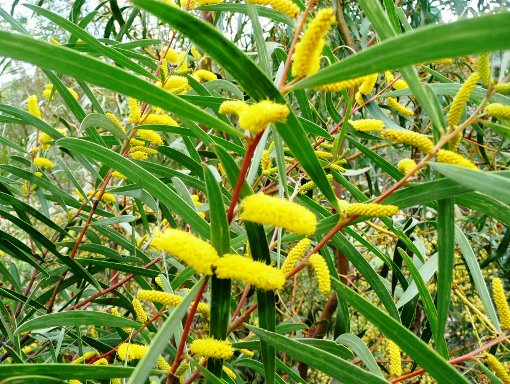
Acacia glaucoptera - Flat Wattle or Clay Wattle

Acacia guenistifolia - Spreading Wattle or Early Wattle
Acacia genistifolia, commonly known as spreading wattle or early wattle is a species of Acacia in the family Fabaceae
Size 0.6 to 3m in height
Common in south-eastern Australia from Dubbo, N.S.W., S through A.C.T. to the Grampians, Vic.; rare in S.A. (N of Mintaro); abundant in N and E Tas., including Flinders and Bruny Islands. Grows in a variety of soils, in dry sclerophyll forest and woodland or heathland below 1000 m alt.
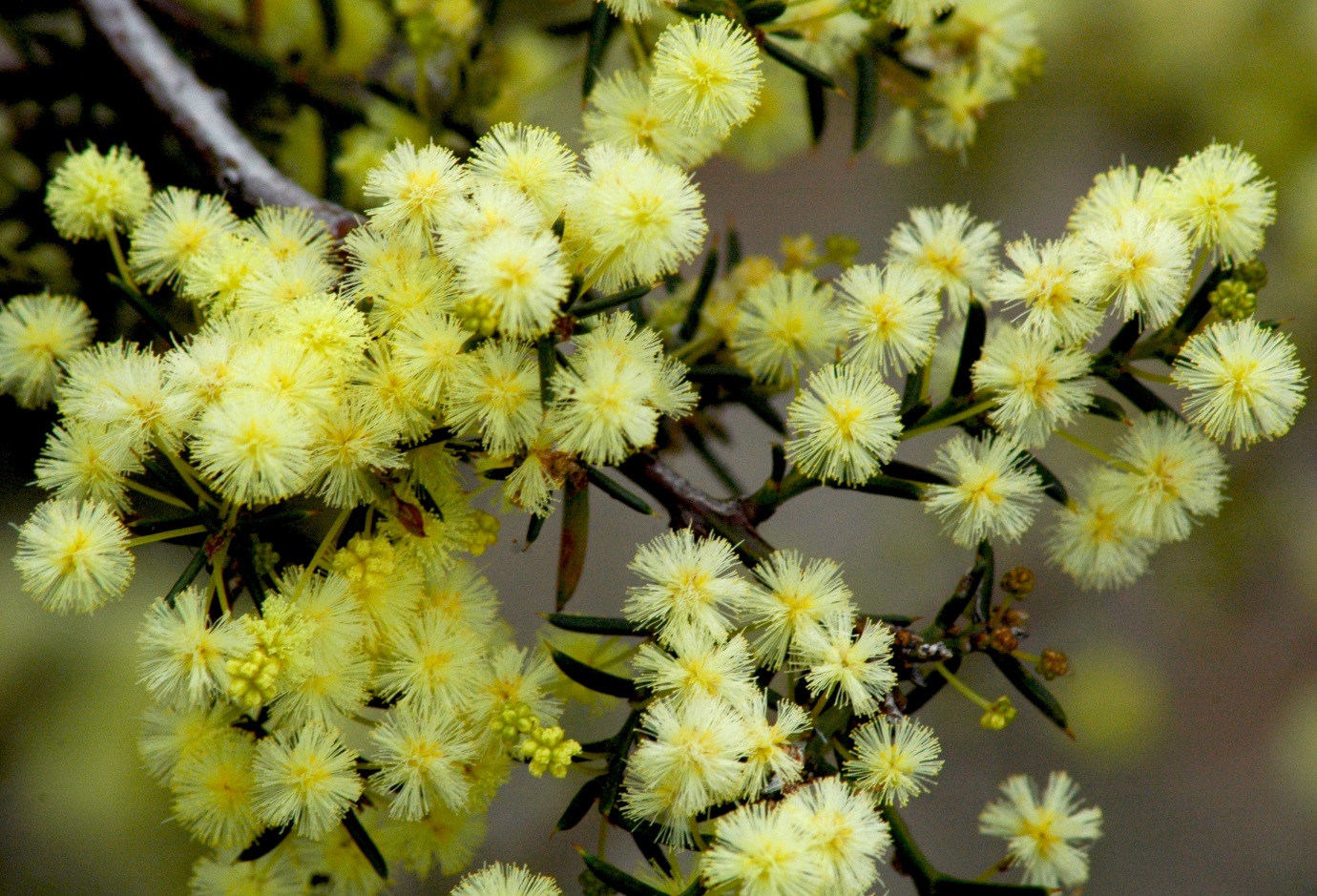
Acacia guinettii - Golden Gravel Wattle
Common Name Golden Gravel Wattle
Size 2 m in height by 2.5 m wide
Good for ornamental gardens or border planting.
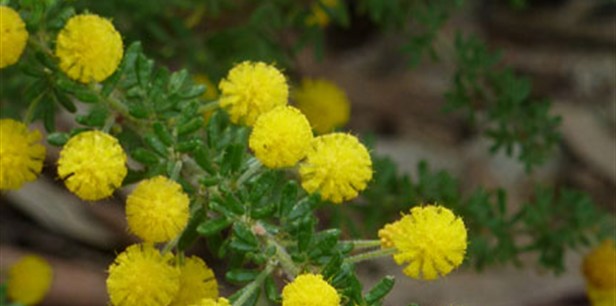
Acacia implexa - Hickory Wattle
Common Name Hickory Wattle
Size 5 to 15 m in height
Also known as lightwood, as it is fast growing and the wood is used for furniture making.
95250047942500
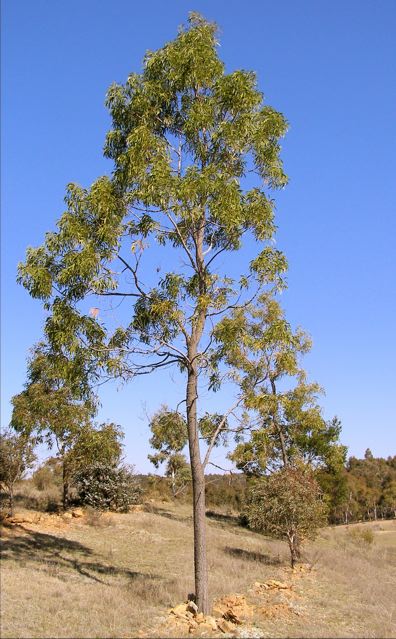
Acacia melvillei - Yarran, Myall
Common Name Yarran, Myall
Size up to 15 m tall
113347550673000
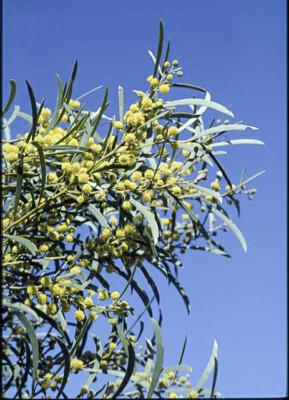
Acacia montana - Mallee Wattle
Common Name Mallee Wattle
Size rounded to 2.5 m
Generally dense habit bright green, sticky, narrow leaves and golden ball shaped flowers in spring.
Frost hardy and suitable for areas of low maintenance.
138112594678500
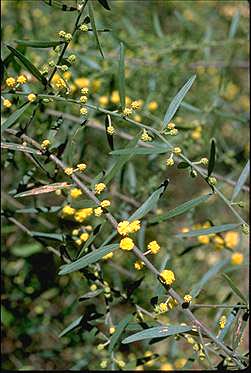
Acacia pycnantha - Golden Wattle
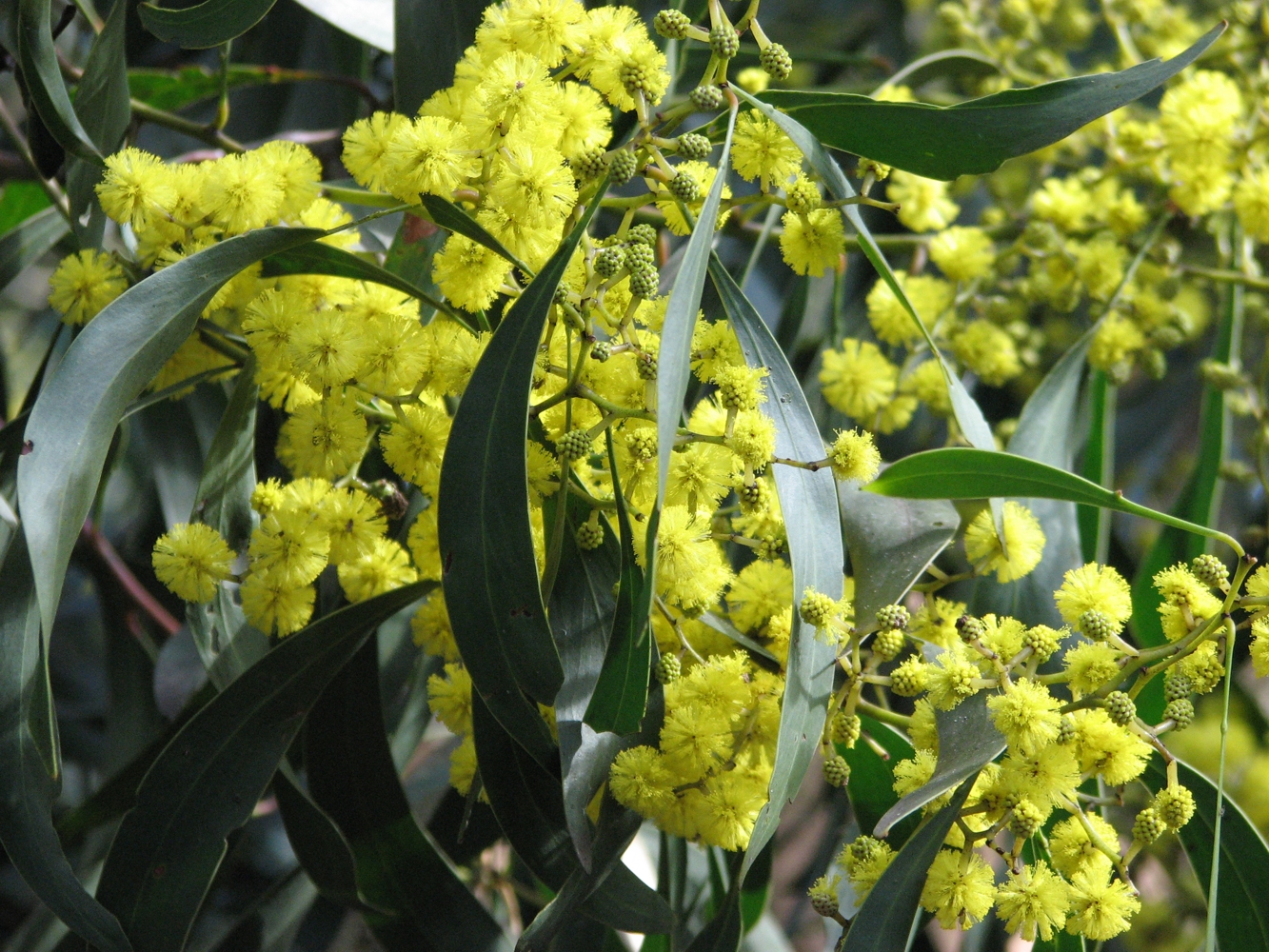
Acacia pycnantha - Golden Wattle
Common Name Golden wattle
Size to 8 m in height
It was formally adopted as the floral emblem of Australia in 1988. The golden wattle has been grown in other parts of the world for the tannin in its bark. It is a good bird attracting tree. As well as being an ornamental plant ii is used as a wind break or in controlling erosion.
200025018288000

Acacia saligna - Coojong, Golden Wreath Wattle, Orange Wattle, Blue-leafed Wattle and West Australian Golden Wattle
Common Names Coojong, Golden Wreath Wattle, Orange Wattle, Blue leafed Wattle and West Australian Golden Wattle
Size up to 8 m
Acacia saligna grows as a small, dense, spreading tree with a short trunk and a weeping habit.
Acacia saligna can be used for multiple purposes, as it grows under a wide range of soil conditions into a woody shrub or tree. It has been used for tanning, revegetation, animal fodder, mine site rehabilitation, firewood, mulch, agroforestry and as a decorative plant.
29527554864000
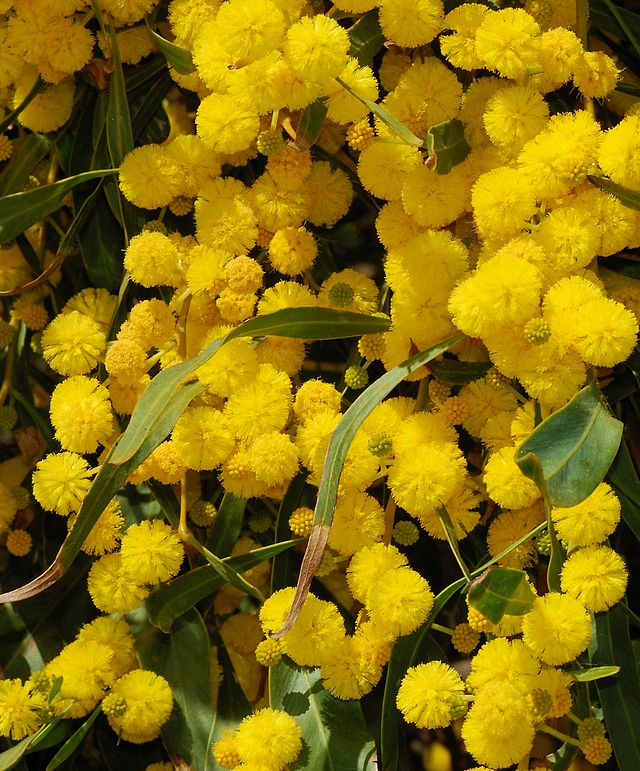
Acacia spectabilis - Mudgee Wattle, Glory Wattle, Pilliga Wattle and Golden Wattle
Common names include Mudgee Wattle, Glory Wattle, Pilliga Wattle and Golden Wattle.
Size 1.5 to 4 m in height
The bright-yellow globular flower heads appear in axillary racemes, mostly between July and November in its native range. These are followed by thin leathery pods which are 417 cm long and 1019 mm wide.
The species occurs naturally in dry sclerophyll forest and heath in New South Wales and Queensland and is commonly cultivated.
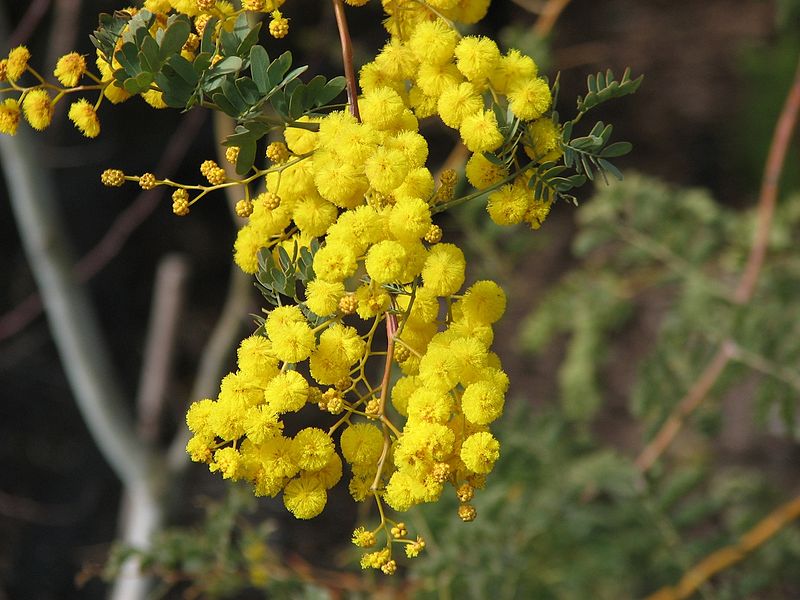
Acacia stenophylla - Shoestring Acacia
Acacia stenophylla is a fast-growing tree, that grows to 410 metres (1333 ft) tall.[2] The form is upright with decumbent or weeping branches and foliage. The leaves are gray to gray-green, narrow and long.
Acacia stenophylla has medium salt and frost tolerance. The average minimum annual rainfall that the tree needs is around 400mm/yr.[2] It is not listed as a threatened species.[1]
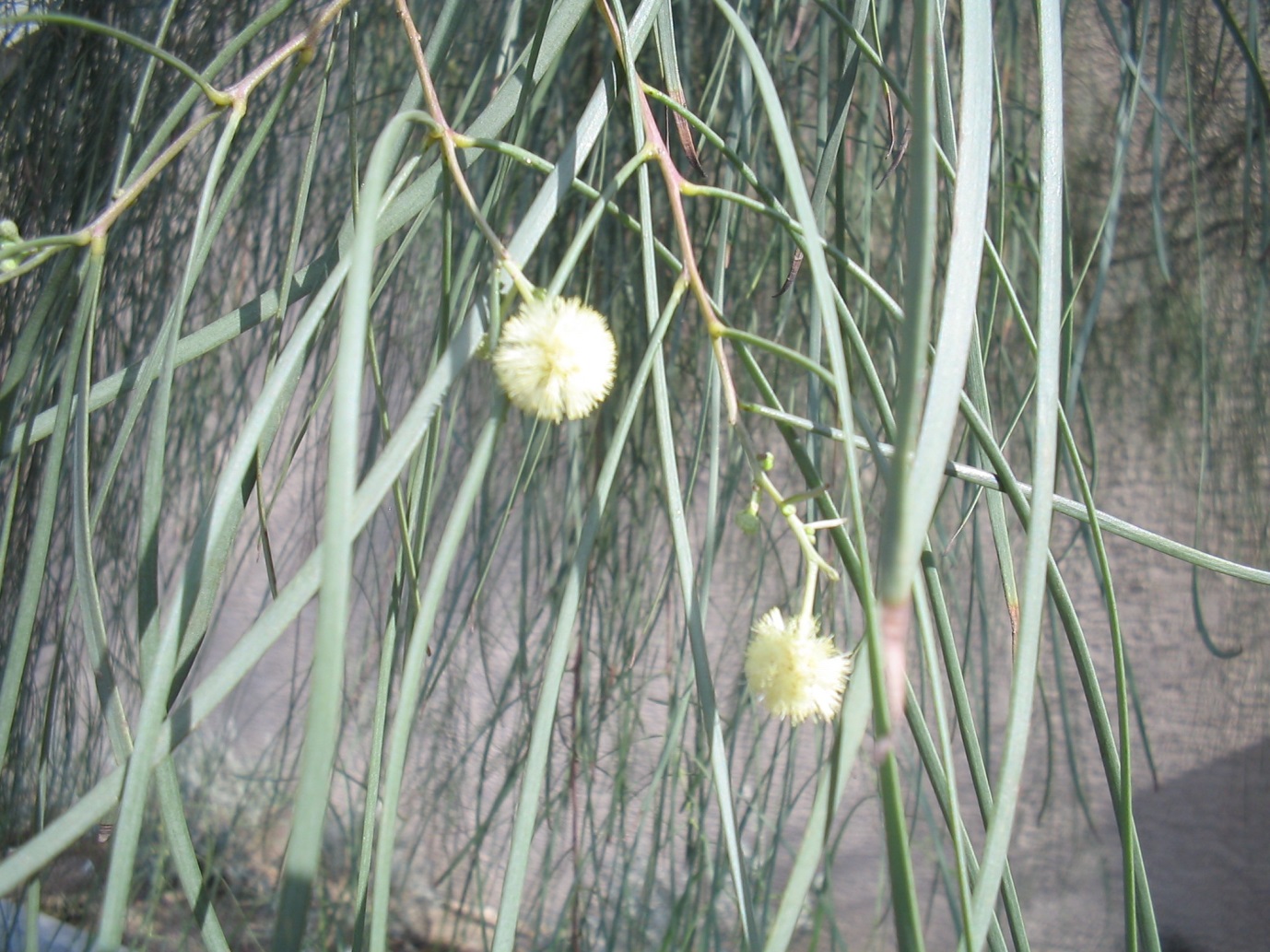
Acacia uncinata - Round Leafed Wattle
Common Name Round leafed wattle
Size shrub 1 to 3 m in height
Scattered in open forest. Likes sandstone and good drainage. Shrub with sparse pendulous habit and grey -green leaves. Leaves are covered with short soft hairs. A very interesting leaf for a wattle. Flowers are bright yellow and globular. Likes full sun to part shade.
447675138239500
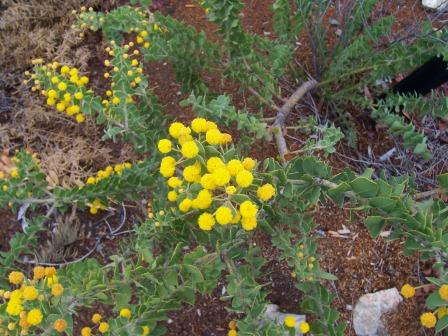
Acacia verniciflua - Varnish Wattle
Common Name Varnish Wattle
Size 1 to 6 m in height as it has a spreading habit
Likes sunny well drained positions in most soils. Suitable for areas of low maintenance. Frost hardy to -7 degrees.
134302532194500
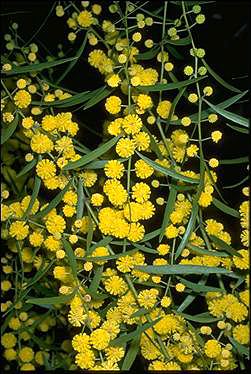
Actinosus helianthi - Flannel Flower
Flannel flower
The flannel flower is generally a herbaceous shrub growing up to 50 cm high, although rare specimens can be found to be 1.5 m high. The stem, branches and leaves of the plant are a pale grey in colour, covered in downy hair (rather like flannel in texture). The attractively lobed leaves are up to 10 cm (4 in) long and 7 cm (3 in) wide, with daisy-shaped flowerheads around 5 or occasionally 8 cm (2-3 in) in diameter. The bracts are cream to white in colour. Flowering occurs in spring and may be profuse after bushfires.
Flannel flowers grow in sandstone heathland in coastal New South Wales and Queensland, and are commonly seen around the Sydney basin in spring.
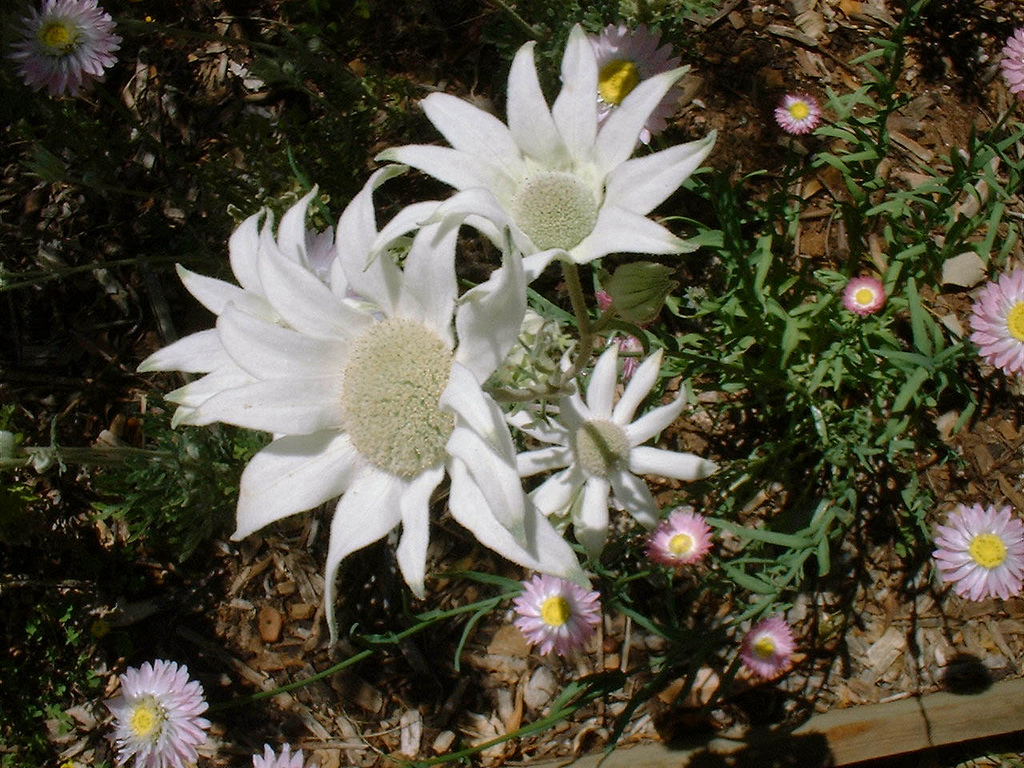
Alectryon oleifolius - Name Western Rosewood, Boonaree
formerly
Heterdendrum Oleifolium
Common Name Western Rosewood, Boonaree
Size up to 9 m
Useful for shelter and shade.
42862569977000
Alygyne hekeifolia - -
An erect shrub, up to three metres high, Alyogyne hakeifolia is densely covered in fine leaves. The species is known for its rapid growth, especially under favourable conditions. Flowering begins between May and August in its native habitat, and continues until February. The flowers are variously blue, purple, or various shades of creamy yellow; they become deeply coloured and papery when spent. Blooms appear profusely after the first or second year, are deeply cupped in form, and have five large petals which open to reveal the deep red centre.
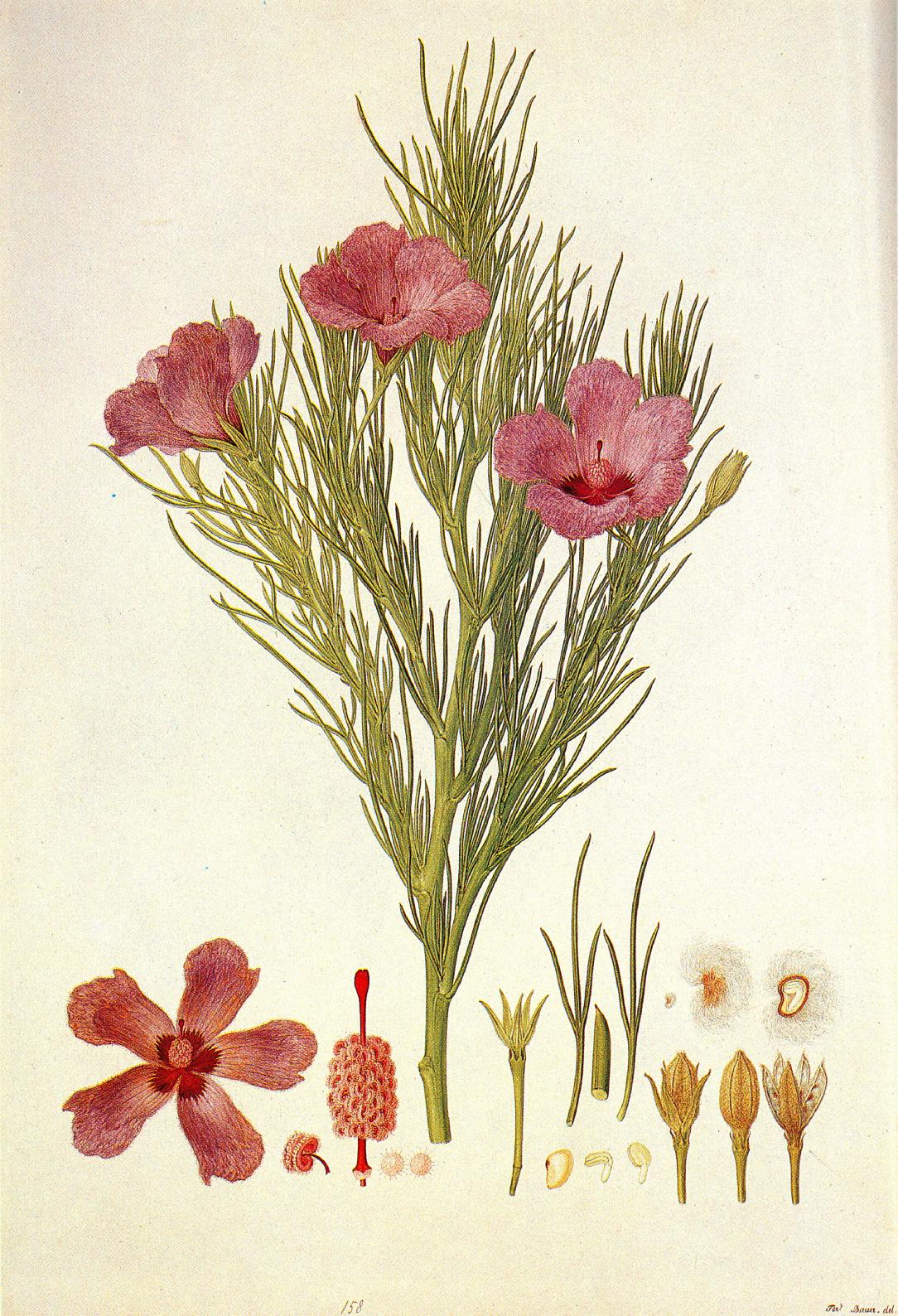
Anthropodium fimbriates - Chocolate lily, Nodding Chocolate Lily
Common Name Chocolate lily, Nodding Chocolate lily
Full sun, mass planting to gain chocolate scent.
314325190690500In drought conditions plants may shrivel back to 4362450153543000tubers then resprout when it rains.
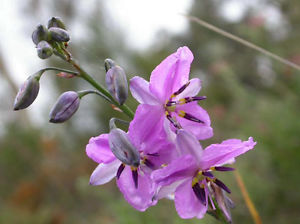
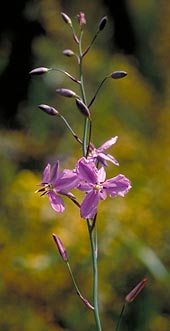
Banksia lehmanniana - Yellow Lantern Banksia or Lemanns Banksia
Common Name Yellow Lantern Banksia or Lemanns Banksia
Size up to 5 m in height
Flowering typically occurs between October and January. Unlike those of most other banksias, the cylindrical inflorescences hang down from branchlets and measure 511 cm in length and 810 cm in diameter. They are green-yellow in colour and smell of honey, and drip large amounts of nectar. The buds are a rich chocolate brown in colour until the yellow flowers push through. The inflorescences turn grey as they age, and the old flowers remain as up to 20 large woody follicles develop.
117157596520000
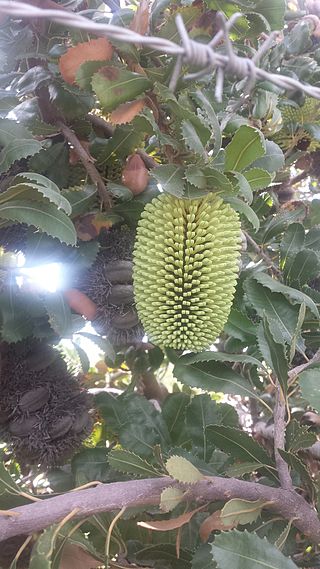
Beyeria leschenaultii - Turpentine Bush, Felted Wallaby Bush
Common Name Pale Turpentine bush, Felted Wallaby bush
Size small shrub up to 1.5 m
Its leaves are white and hairy on the underside; they are narrow with their margins turned under. Small, stalked flowers occur in leaf forks. The stems of the plant are often covered with a hard resin. Male and female flowers on separate plants.
74295069723000
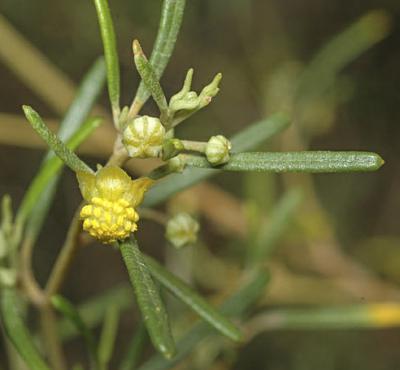
Bulbine bulbosa - Bulbine Lily, Golden lily, Leek Lily, Wild Onion
Common Name Bulbine Lily, Golden lily, Leek lily, Wild Onion.
Size 75 cm tall
The fragrant, star-shaped yellow flowers are borne on long vertical flowering stalks with the oldest flowers at the base. Each flower has six petals with tufted, hairy, yellow sepals. Each individual flower only lasts for one day, but the flowering head may bloom for some weeks.
The flowering period is generally long, extending from September to March, but there is wide local variation. Despite its name, the plant forms a round corm, not a bulb, to overwinter.
The corms of mature plants are nutritious, containing calcium and iron, and were used as food by the Aborigines,[3] who called it parm, puewan, and pike. They regarded the corms as the sweetest-tasting of the lily and lily-like Australian plants.
10477550990500

Calostemma purpureum - Garland Lily
Common Name Garland Lily
Size 20 to 50 cm in height
The plant makes an ideal rockery subject, taking up very little space but extending its flowering stem high enough to become obvious. lt may also be used in tight rows in more formal situations as the Nerines are often used.
45720019748500

Calothamnus quadrifidus - One Sided Bottle Brush
This is an extremely beautiful, hardy and versatile plant. It flowers for long periods of the year through Summer and Spring showing excellent bright red flowers along the stems. The attractive foliage is fine, neat and pine like providing shelter for small birds and contrasting beautifully with the flowers. This is a tough plant tolerating frost down to about -7 C, wind, coastal exposure and most soil types including wet areas. Growing to 2.5 metres high and wide, it's also suited to sloping sites and is probably the best known and hardiest of the Calothamnus genus
138112535496500

Calytrix tetragona - Fringe Myrtle
Common name Fringe Myrtle
Size 1 m
Calytrix tetragona is an easily grown and very hardy shrub for the small garden, usually reaching 1 m or more, although long-lived specimens grow taller: a 20-year-old plant at the Australian National Botanic Gardens has reached 2.5 m. To obtain a bushy plant of this size, watering and regular light prunings are needed to avoid bare wood.
